Chemistry and Chemists № 1 2024
Journal of Chemists-Enthusiasts
| Content | Chemistry experiments - video | Physics experiments - video | Home Page - Chemistry and Chemists |
|
Chemistry and Chemists № 1 2024 Journal of Chemists-Enthusiasts |
Vegetable oil, ethanol and water (formation of emulsion) - part 7, 8 V.M. Viter |
|
Having noticed a mistake in the text, allocate it and press Ctrl-Enter
Castor oil, ethanol and water: emulsion formation - part 7
Return to the previous experiment and try to get an oil-in-water emulsion again. Last time, I added a solution of castor oil in alcohol to the excess of water, but the oil concentration in this solution was too high, so the intended emulsion did not form.
Касторовое масло, этанол и вода: образование эмульсии - ч.7 So, I poured 5 ml of ethanol into a test tube, added 2 drops of castor oil, and stirred until it dissolved. Then, the resulting solution was added in portions to 150 ml of distilled water and mixed. The liquid has become cloudy white, indicating the formation of oil-in-water emulsion. Microscopic droplets of oil are dispersed in a water medium. Larger oil droplets floated on the surface of the emulsion, i.e., not all the oil contained in the solution formed an emulsion. I poured the emulsion into a jar, closed it tightly and left the emulsion to stand. Four weeks have passed, but there are no signs of destruction of the emulsion. When a green laser beam is passed through the emulsion, the Tyndall effect is observed. In the dark, this experiment looks impressive. I tried passing the beam through the emulsion in different directions. I especially liked the picture when the laser beam, directed diagonally downward, hit the point where three media met: water, air and glass. It is advisable to use the experiment for lecture demonstrations of light scattering by dispersed systems. The advantages of this experiment are ease of carrying out, non-toxicity and availability of the necessary components. Alcohol, castor oil and water are readily available liquids; the preparation of the emulsion is simple, and the emulsion itself is surprisingly stable. Photos/Video |
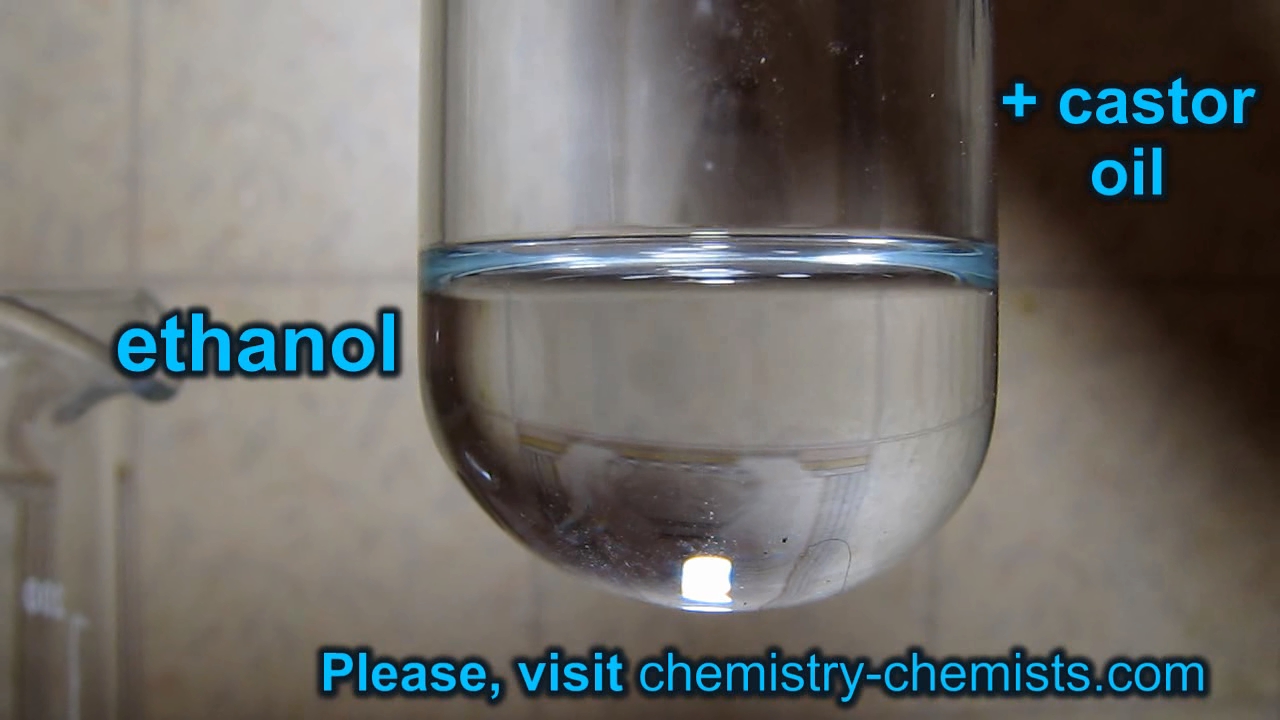
Castor oil, ethanol and water: emulsion formation |

|

|

|

|
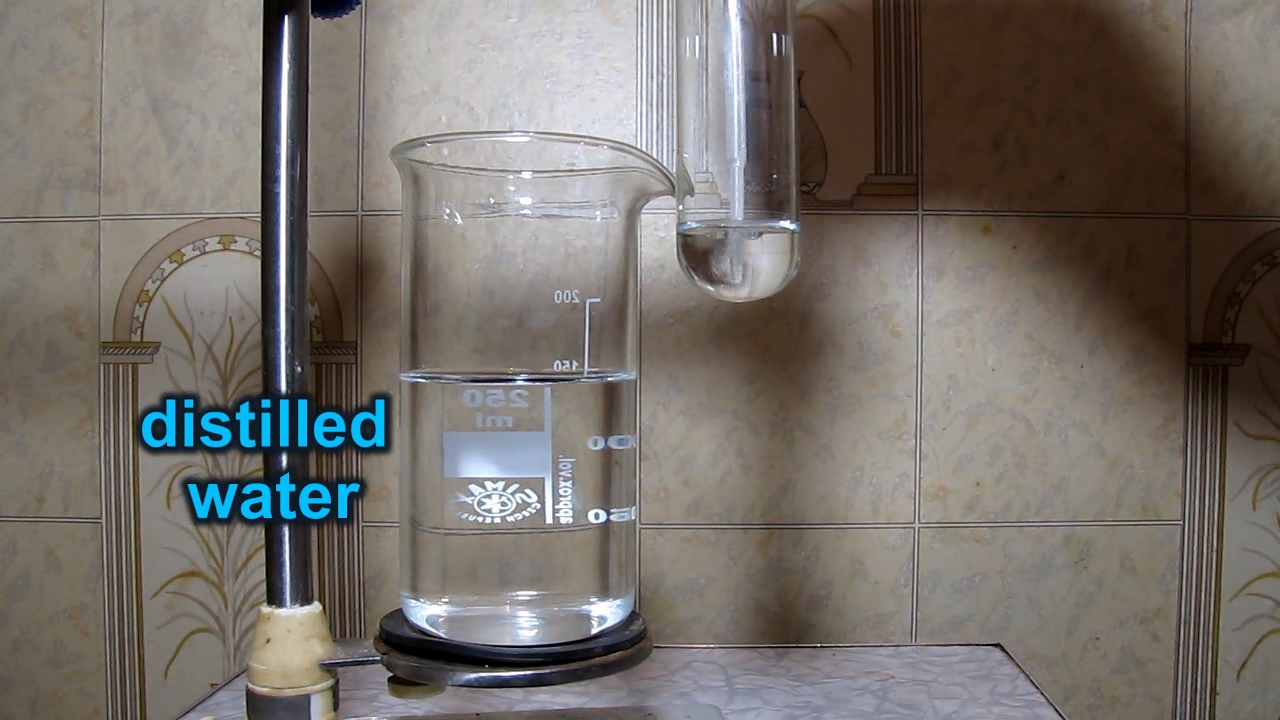
|
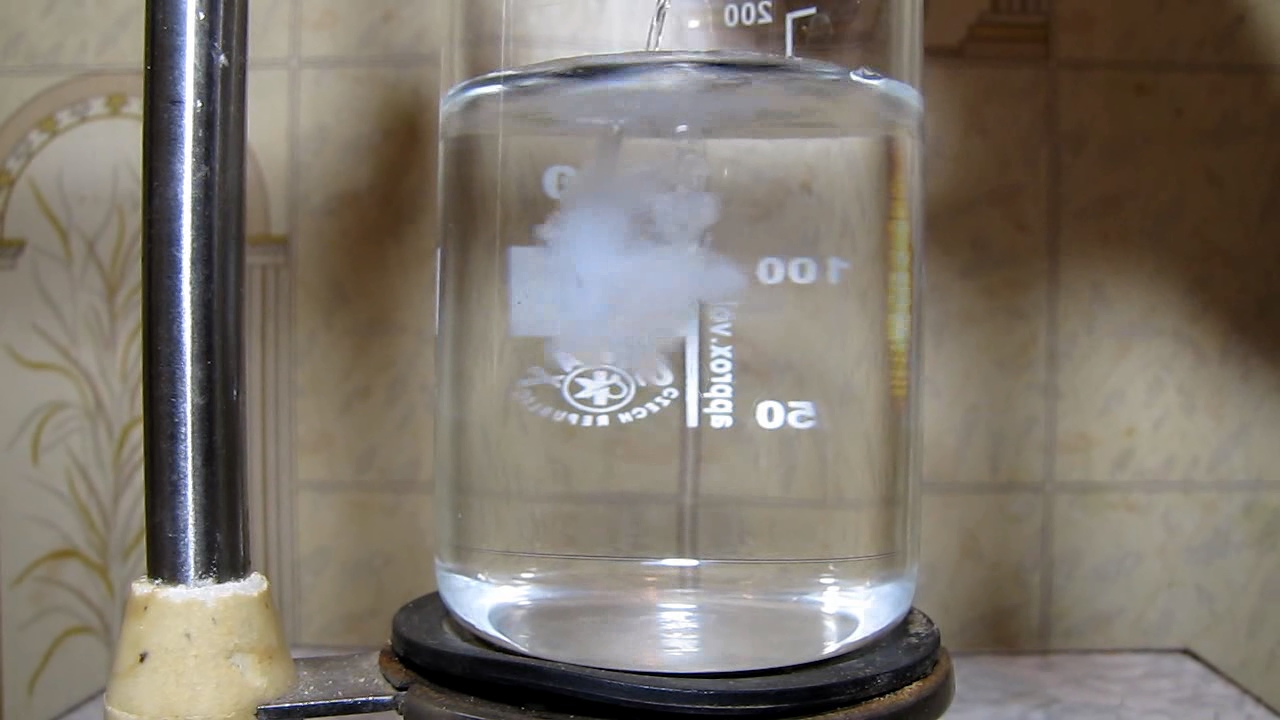
|
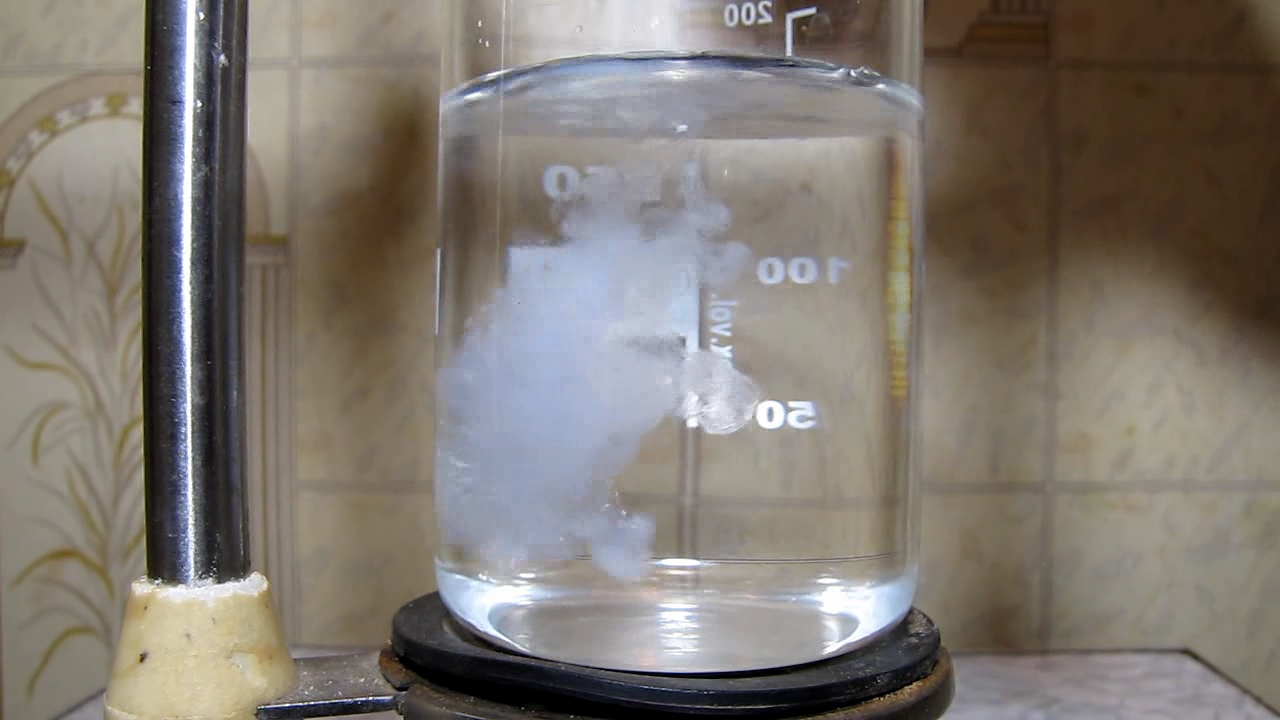
|
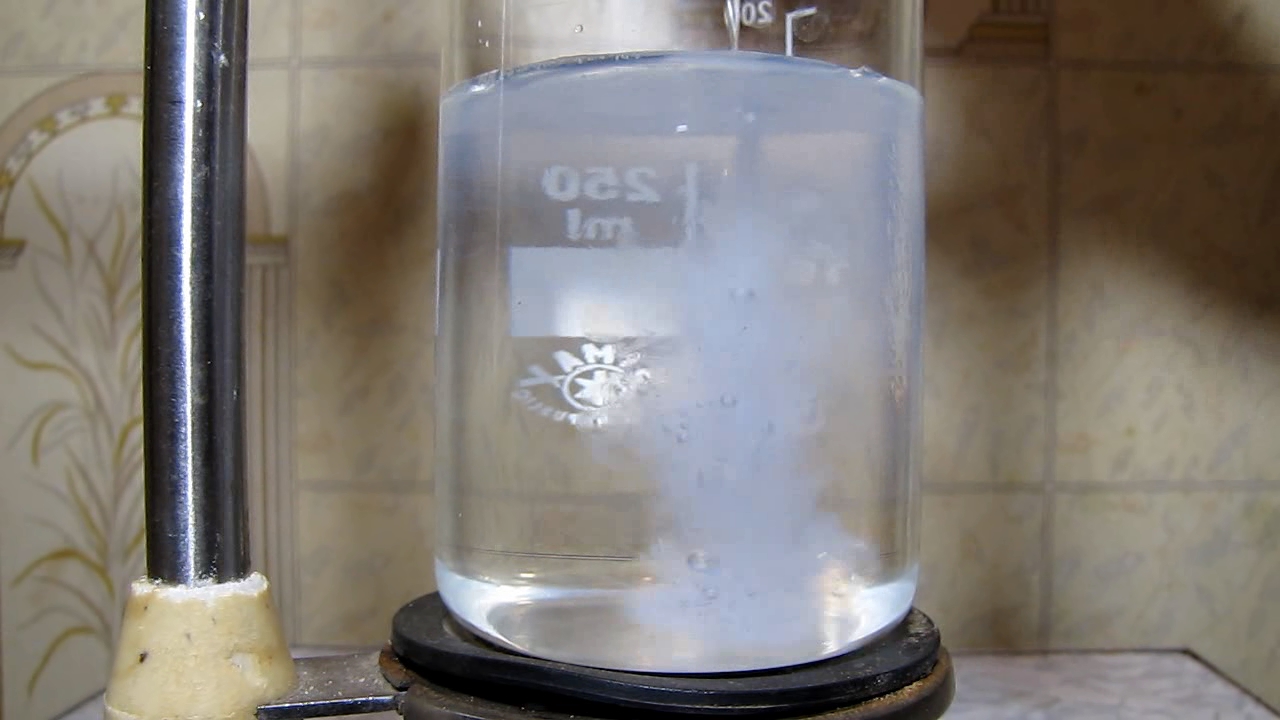
|
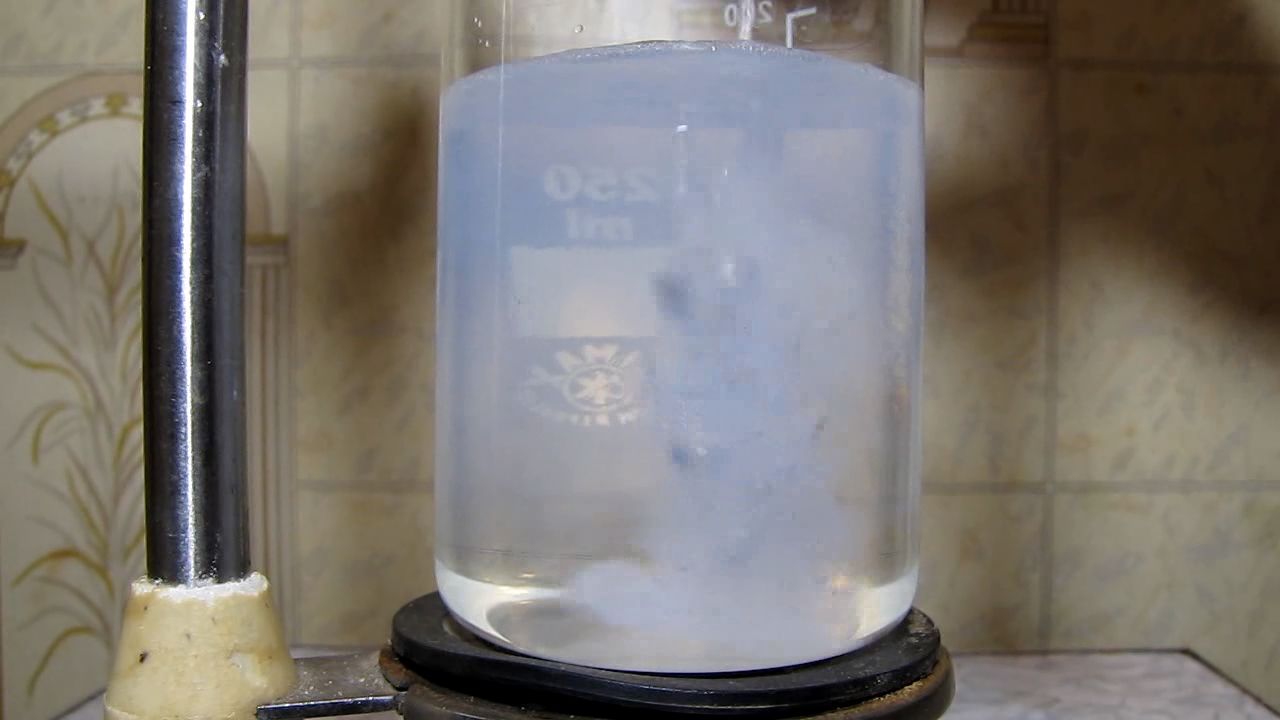
|
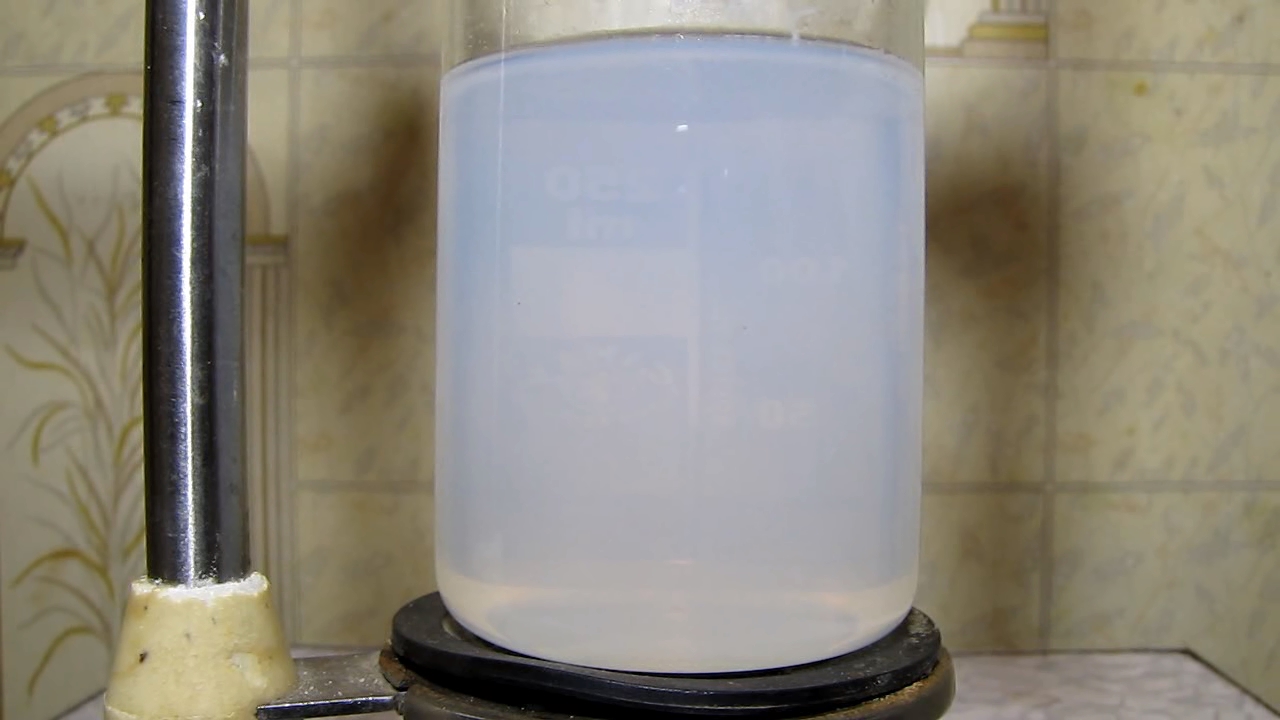
|

|

|
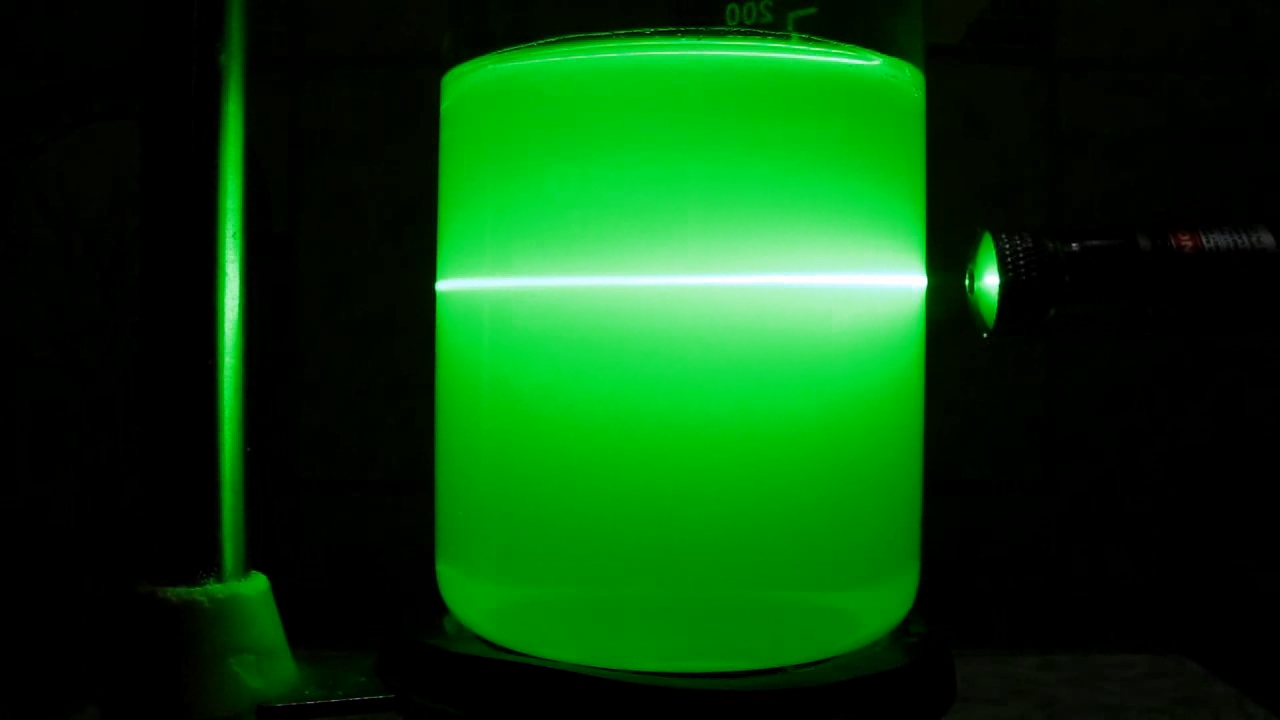
|

|

|

|

|
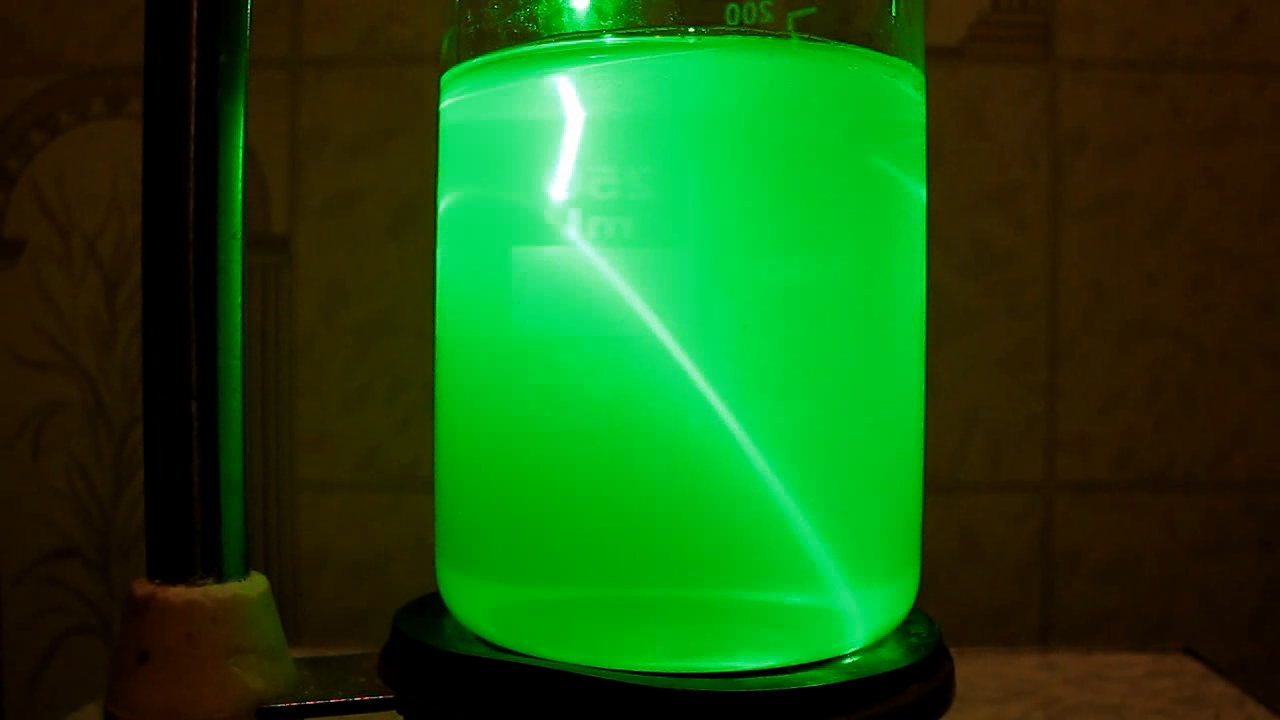
|
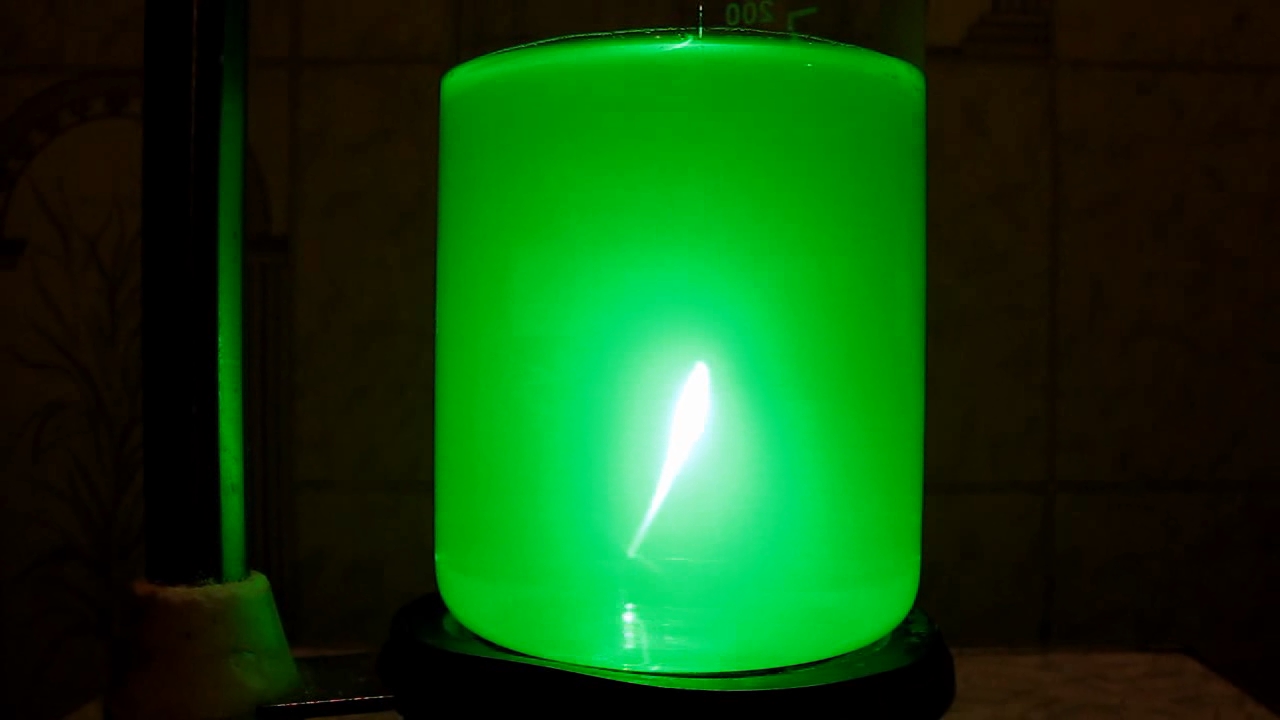
|

|
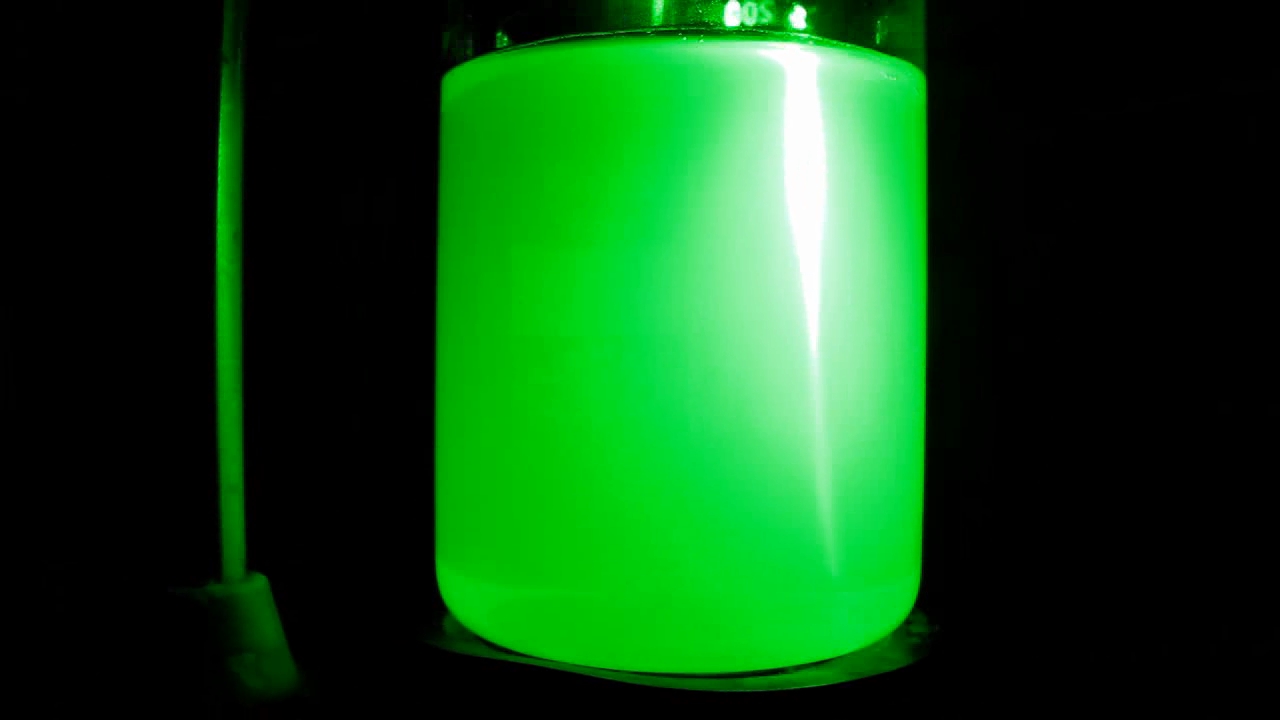
|
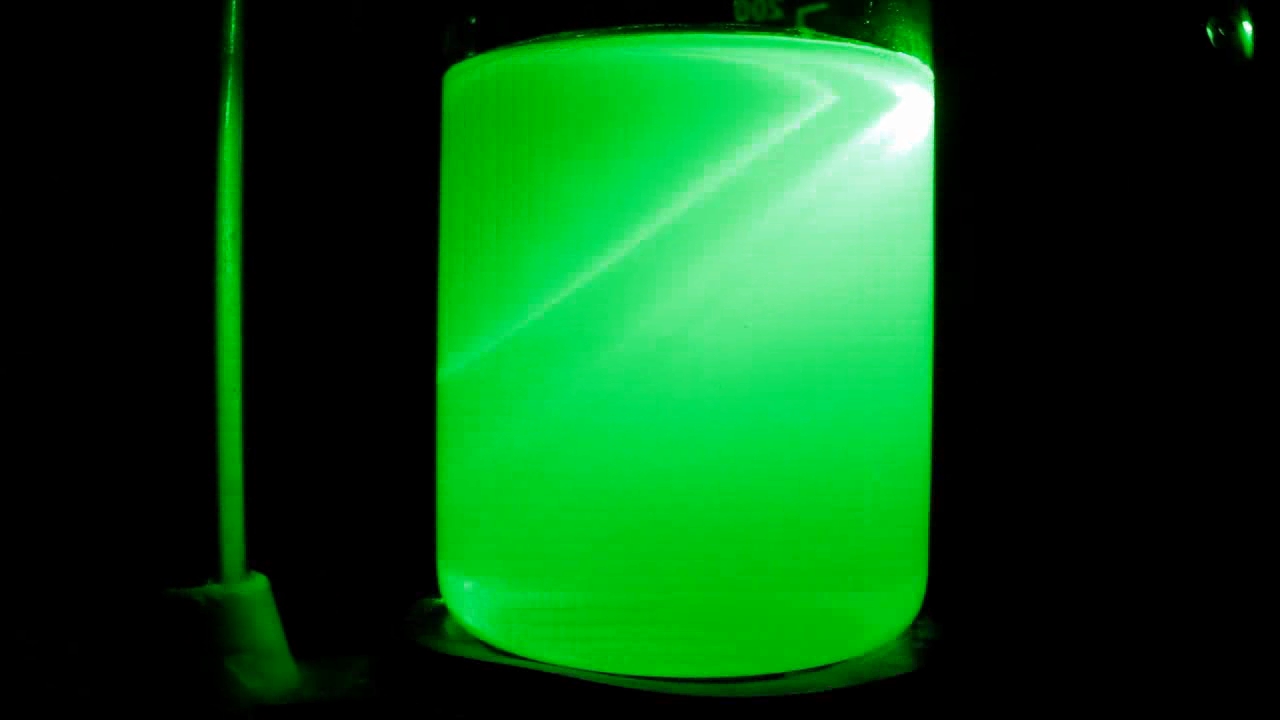
|
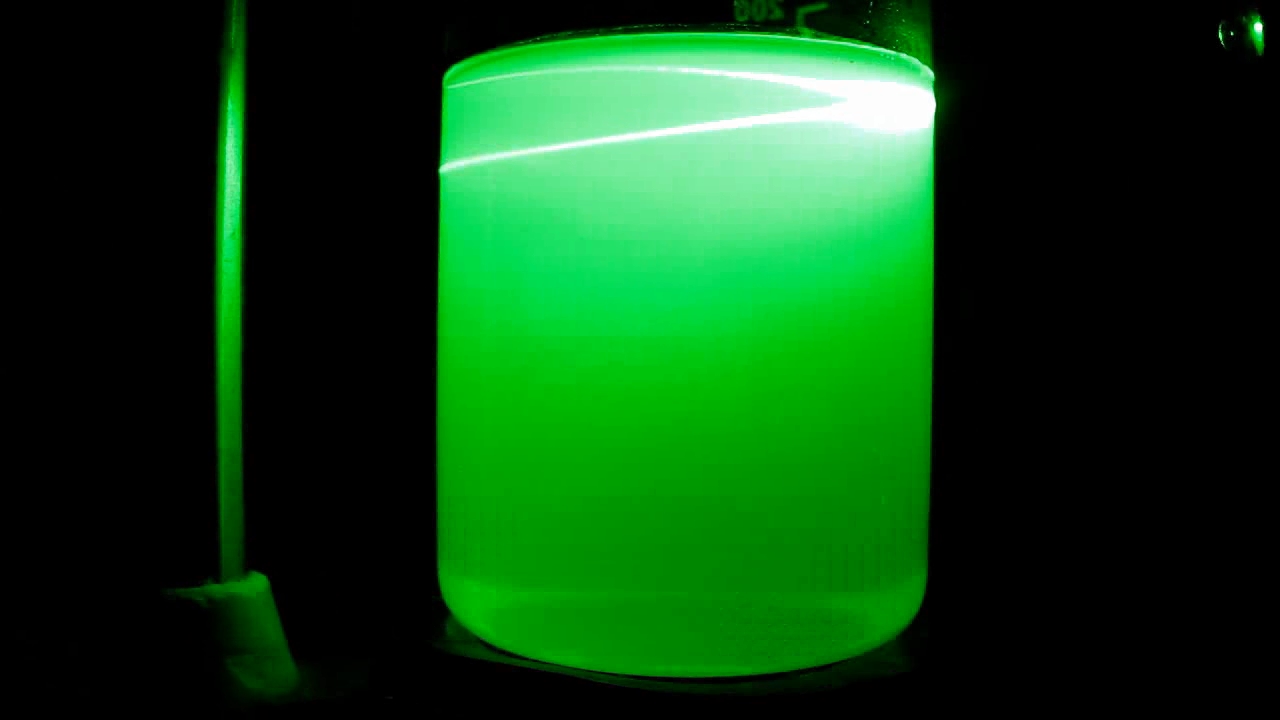
|
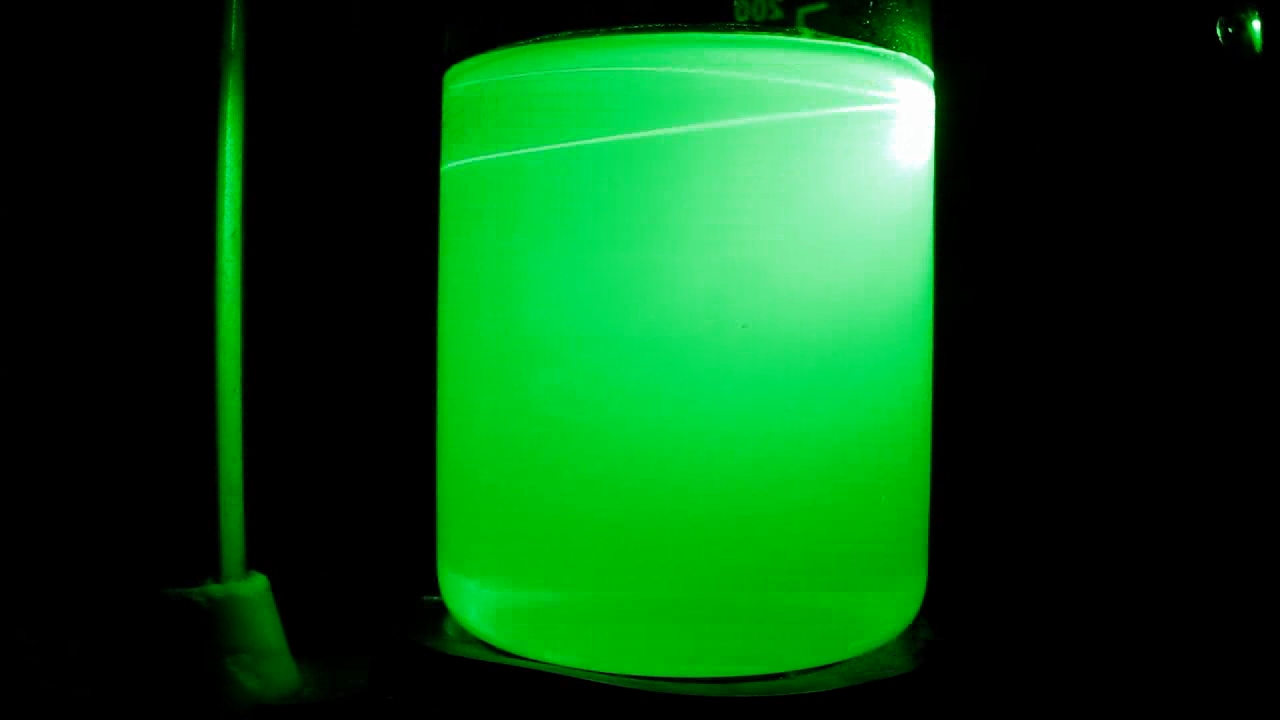
|

|
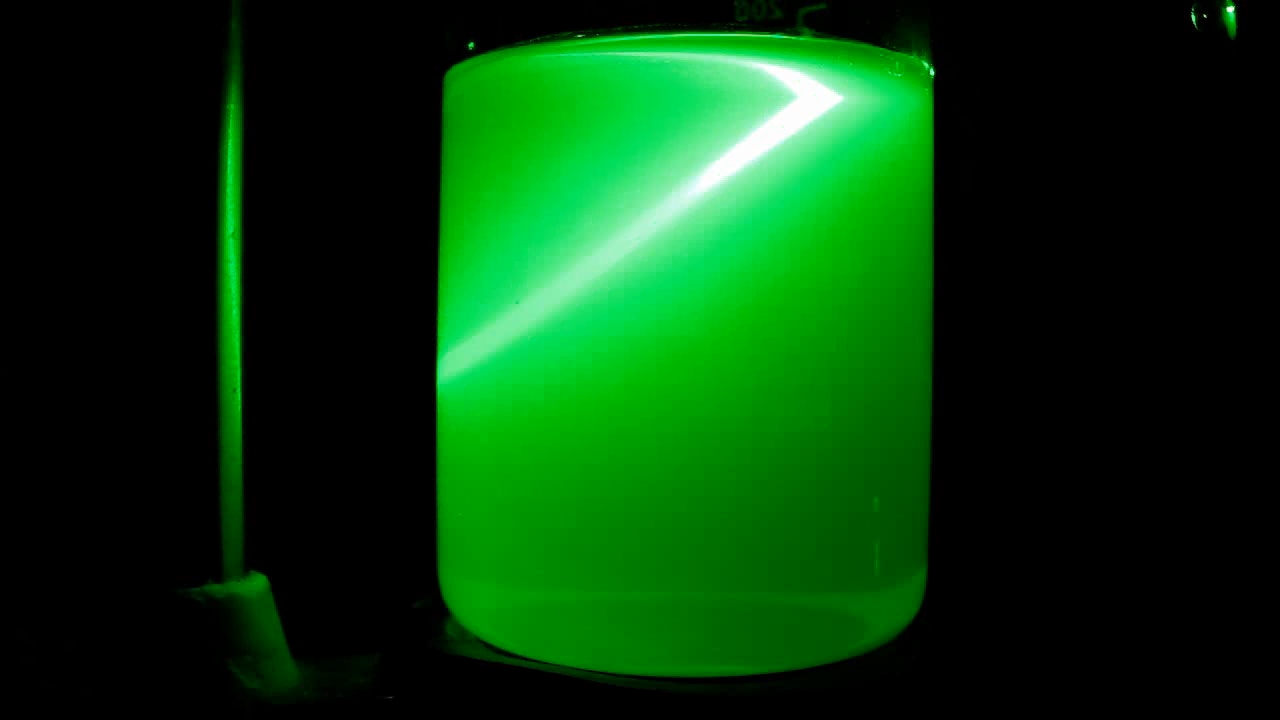
|
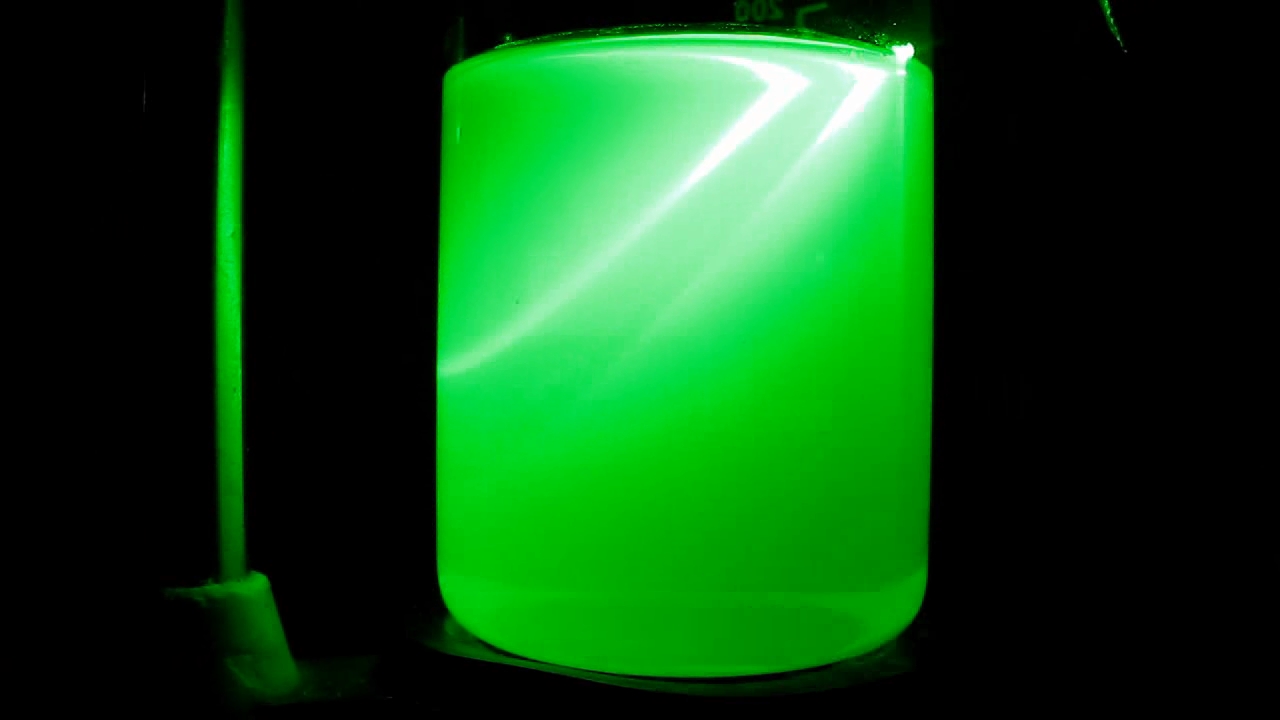
|
|
Having noticed a mistake in the text, allocate it and press Ctrl-Enter
The experiment described below had two goals:
* establish whether ethyl alcohol and castor oil are mixed in any proportions (are ethanol and castor oil miscible liquids); * try to make a solution that simultaneously contains ethanol and sunflower oil in comparable quantities by adding castor oil to the system. Previously, I added castor oil to ethyl alcohol in small portions and stirred each time until completely dissolved. As a result, 7 ml of oil dissolved in 10 ml of alcohol. After which, I stopped the experiment. This time, I reversed the order of adding the liquids (i.e., I did the "opposite" experiment). I poured 5 ml of castor oil into a test tube. First, I added 0.5 ml of ethanol. The alcohol formed the top layer. Mixing the liquids with a glass rod took considerable time since castor oil is a viscous liquid, but the result was a homogeneous solution. Then, I added another 2.5 ml of ethanol. The alcohol also formed a top layer with a clearly visible interface between the liquids, and after mixing, a homogeneous solution was obtained. The next two portions of alcohol (1 ml each) were mixed with the resulting solution much faster. As a result, 5 ml of ethyl alcohol dissolved in 5 ml of castor oil. During one of the previous experiments, 7 ml of castor oil dissolved in 10 ml of alcohol. Thus, ethyl alcohol and castor oil are mixed in any proportion. Move on to the second task. I added 0.5 ml of sunflower oil to the obtained solution. Drops of oil sank to the bottom, forming a lower layer, since the density of sunflower oil turned out to be higher than the density of our mixture (castor oil - ethanol). I expected a clear, slightly yellowish solution would form after stirring the liquids with a glass rod. Castor and sunflower oils consist of compounds that have a similar chemical structure. These are mainly triglycerides of higher fatty acids. Therefore, I assumed sunflower oil would dissolve in the mixture of equal volumes of ethanol and castor oil. The experiment refuted this assumption. When mixing the liquids in the test tube, a white and cloudy emulsion formed; moreover, this emulsion did not become transparent over time. So, even 0.5 ml of sunflower oil did not completely dissolve in the mixture of 5 ml of castor oil and 5 ml of ethanol. I added a few more portions of sunflower oil and stirred. In total, the following was added to the test tube: 5 ml of castor oil; 5 ml of ethanol; 5 ml of sunflower oil. A white emulsion formed. To be honest, I did not expect such a result. A comic association arose: I prepared an "oil-in-oil" emulsion. Of course, the above term is not quite correct since the mixture contains not only vegetable oils but also 1/3 of ethyl alcohol. I directed a green laser into the mixture, and it became noticeable that large drops were forming in the liquid, resulting from the breakdown of the emulsion. These drops aggregated into larger ones, eventually collecting at the bottom. Consequently, a transparent layer of liquid formed at the bottom of the test tube, above which a white emulsion remained. I stirred the liquids again. The bottom layer was easily dispersed throughout the entire volume, forming an emulsion that gradually began to collapse. I left it standing for 24 hours. The liquid separated into two transparent layers. The top layer was colourless, and the bottom one was yellow. No turbidity was observed in both layers (it meant the emulsion broke down in both liquid media) [1]. To put it simply, we can say that the bottom layer consisted of sunflower oil, and the top layer was a mixture of castor oil and alcohol. However, vegetable oils are not individual substances but complex mixtures of many different compounds. Different compounds have various properties, in particular, different molecular polarities. Of course, two liquid layers can exchange their components (while in contact). There is no doubt that components of sunflower oil partially passed into the layer of castor oil and alcohol, while compounds contained in castor oil partly moved into the layer of sunflower oil. Additionally, a small portion of ethyl alcohol dissolved in the sunflower oil, leaving the castor oil layer. I directed a green laser at the contents of the test tube. The beam was clearly visible in the upper layer and worse in the lower layer. In the mixture of castor oil and alcohol, the beam looked green; in the layer of sunflower oil, it looked yellow Photos/Video. __________________________________________________ 1 Let me clarify. The castor and sunflower oils used for the experiment were refined. The sunflower oil was bright yellow; the castor oil was slightly yellowish. Уточню. Использованные для эксперимента касторовое и подсолнечное масла были рафинированными. Подсолнечное масло имело интенсивный желтый цвет, касторовое масло было слегка желтоватым. |
|
Этанол, касторовое и подсолнечное масло - ч. 8
Описанный ниже эксперимент имел две цели:
* установить, смешиваются ли этиловый спирт и касторовое масло в любых пропорциях (являются ли этанол и касторовое масло жидкостями с неограниченной взаимной растворимостью); * попробовать "подружить" этанол и подсолнечное масло с помощью касторового масла (получить раствор, который одновременно содержит спирт и подсолнечное масло в сопоставимых количествах, добавив в систему касторовое масло). Ранее я добавлял касторовое масло к этиловому спирту небольшими порциями и каждый раз перемешивал до полного растворения. В результате в 10 мл спирта растворилось 7 мл масла. После чего прекратил эксперимент. В этот раз я изменил порядок добавления жидкостей на обратный (т.е., провел "противоположный" эксперимент). Налил в пробирку 5 мл касторового масла. Сначала добавил 0.5 мл этанола. Спирт образовал верхний слой. Перемешивание жидкостей стеклянной палочкой заняло значительное время, поскольку касторовое масло - вязкая жидкость, но в результате образовался гомогенный раствор. Потом добавил еще 2.5 мл этанола. Спирт также образовал верхний слой с четкой границей раздела жидкостей, а после перемешивания получился однородный раствор. Следующие две порции спирта (по 1 мл каждая) смешались с полученным раствором гораздо быстрее. В результате 5 мл этилового спирта растворилось в 5 мл касторового масла. Во время одного из прошлых опытов в 10 мл спирта растворилось 7 мл касторового масла. Таким образом, этиловый спирт и касторовое масло смешиваются в любых соотношениях. Приступим к выполнению второй задачи. К полученному раствору я добавил 0.5 мл подсолнечного масла. Капли масла опустились на дно, образуя нижний слой, поскольку плотность подсолнечного масла оказалась выше, чем плотность нашей смеси (касторовое масло - этанол). Я ожидал, что после перемешивания жидкостей стеклянной палочкой образуется прозрачный, слегка желтоватый раствор. Касторовое и подсолнечное масло состоят из веществ, которые имеют подобное химическое строение. В основном это триглицериды высших жирных кислот. Поэтому я предполагал, что подсолнечное масло растворится в смеси равных объемов этанола и касторового масла. Эксперимент опроверг данное предположение. При перемешивании жидкостей в пробирке образовалась белая и мутная эмульсия; причем эта эмульсия не стала прозрачной со временем. Т.е., даже 0.5 мл подсолнечного масла полностью не растворились в смеси, которая состоит из 5 мл касторового масла и 5 мл этанола. Добавил еще несколько порций подсолнечного масла, перемешал. Всего в пробирку было добавлено: 5 мл касторового масла; 5 мл этанола; 5 мл подсолнечного масла. Образовалась белая эмульсия. Если честно, я не ожидал такого результата. Возникла шуточная ассоциация: я получил эмульсию "масло-в-масле". Разумеется, приведенный термин - не совсем соответствует действительности, поскольку смесь содержит не только растительные масла, но и 1/3 этилового спирта. Посветил на жидкость зеленым лазером - стало заметно, что в ней образовывались крупные капли, которые являются результатом разрушения эмульсии. Капли объединялись между собой в более крупные и собирались снизу. В результате на дне пробирки образовался прозрачный слой жидкости, над которым была белая эмульсия. Еще раз перемешал жидкости. Нижний слой легко диспергировался по всему объему, образуя эмульсию, которая постепенно стала разрушаться. Оставил стоять 24 часа. Жидкость разделилась на два прозрачных слоя. Верхний слой был бесцветным, нижний - желтым. В обоих слоях помутнение не наблюдалось (это означает, что эмульсия разрушилась в двух жидких средах) [1]. Упрощенно можно сказать, что нижний слой состоял из подсолнечного масла, верхний - из смеси касторового масла и спирта. Однако, растительные масла - не индивидуальные вещества, а сложные смеси, которые состоят из множества разных соединений. Различные вещества имеют разные свойства, в частности, разную полярность молекул. Разумеется, два жидких слоя могут обмениваться своими компонентами (находясь в контакте). Можно не сомневаться, что компоненты подсолнечного масла частично перешли в слой касторового масла и спирта, а вещества, содержащиеся в касторовом масле, частично перешли в слой подсолнечного масла. Небольшая часть этилового спирта также растворилась в подсолнечном масле, покинув слой касторового масла. Направил на содержимое пробирки зеленый лазер. Луч был хорошо виден в верхнем слое и хуже - в нижнем. В смеси касторового масла и спирта луч выглядел зеленым, в слое подсолнечного масла - желтым. |
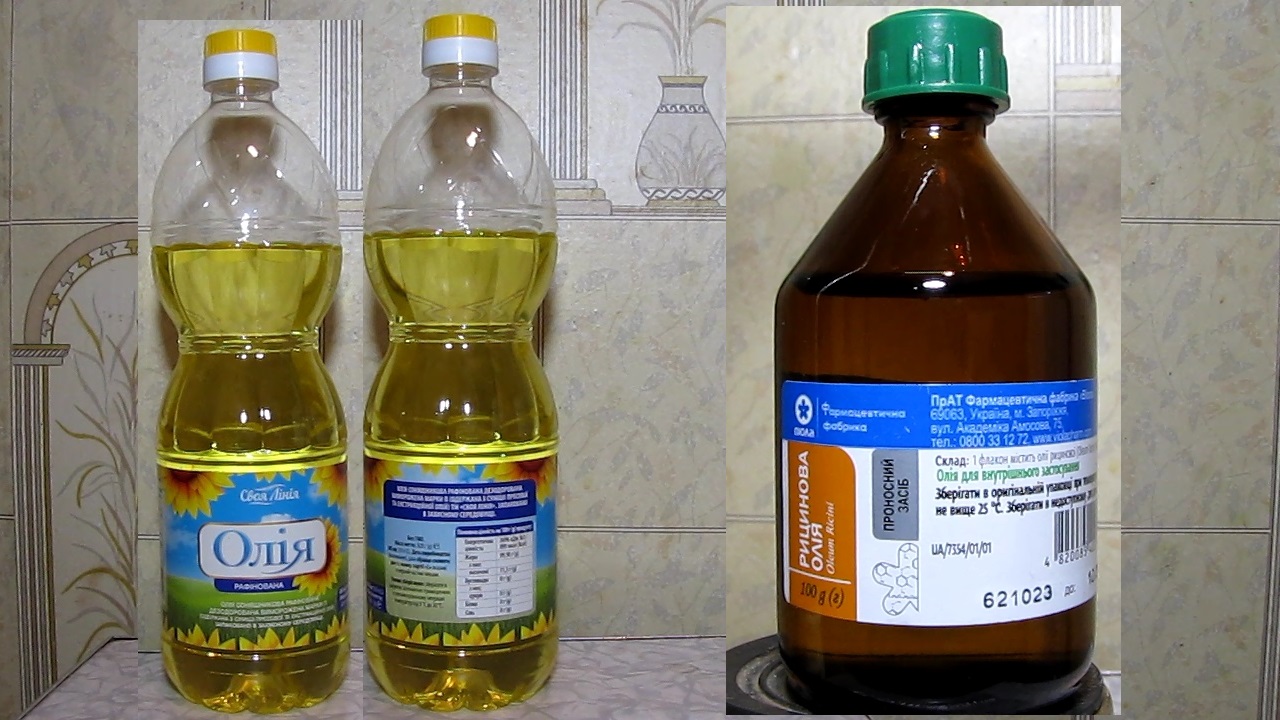
Ethanol, castor oil and sunflower oil |
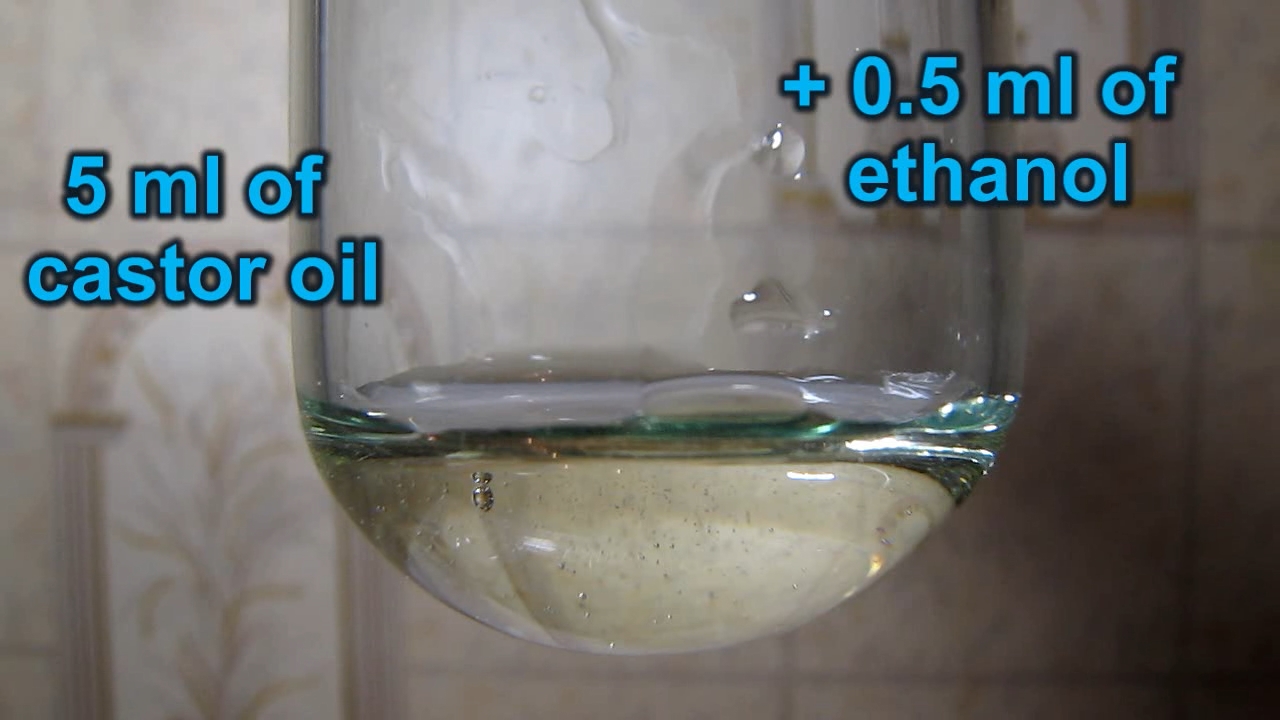
|
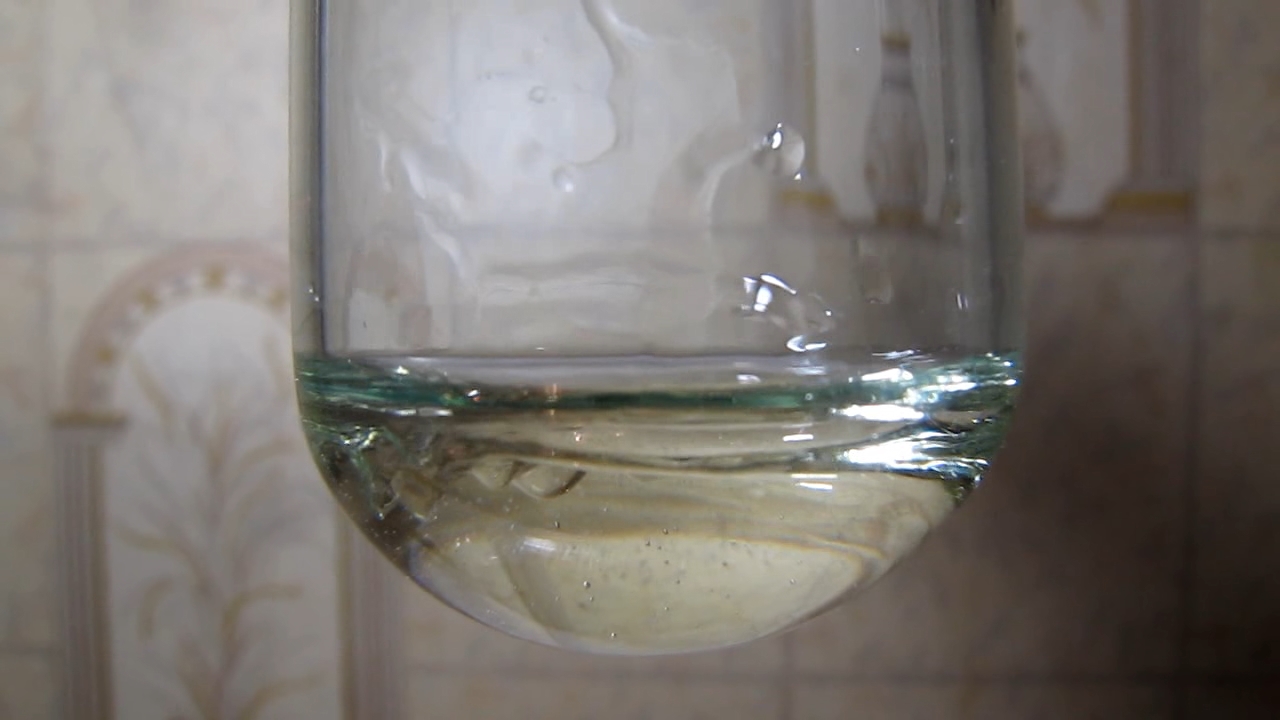
|
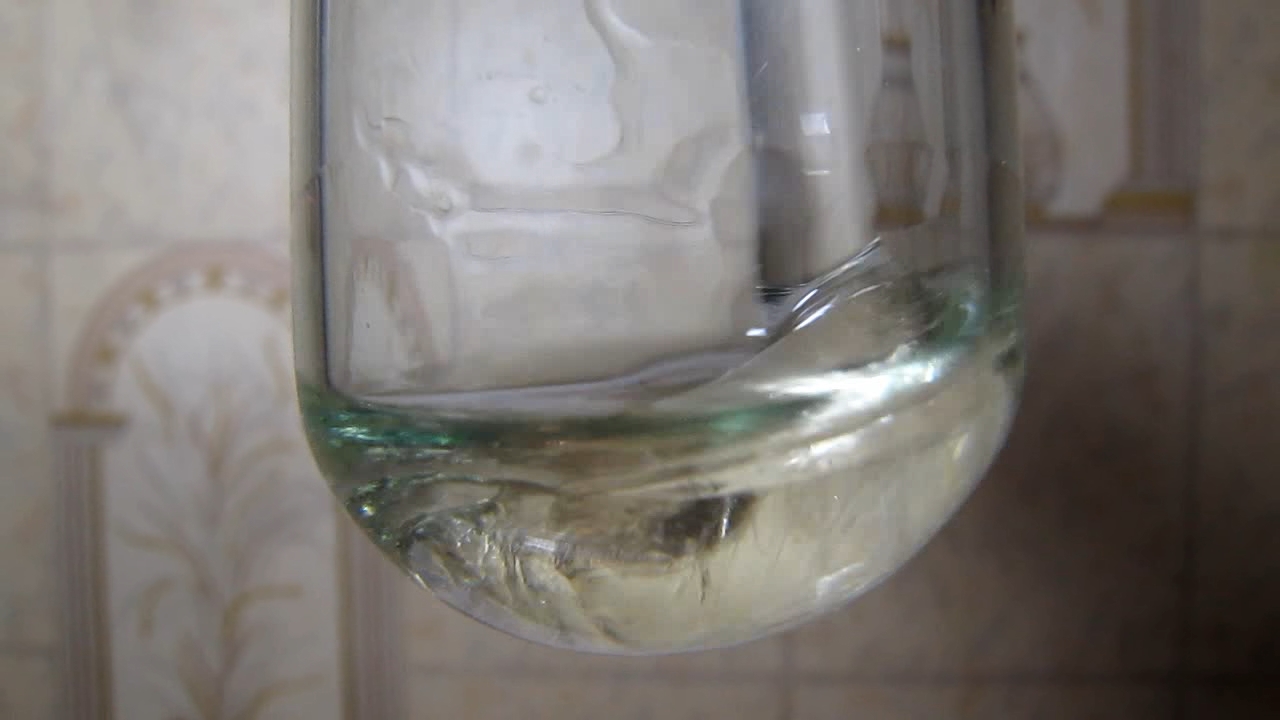
|
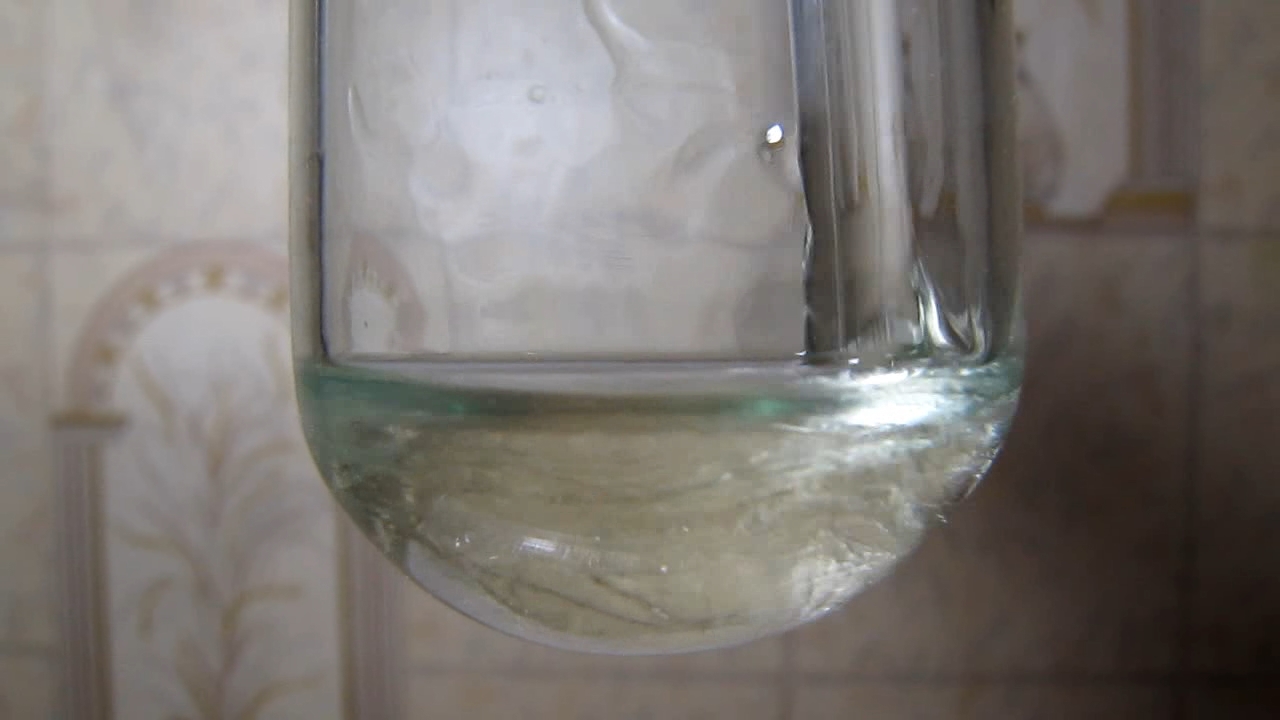
|
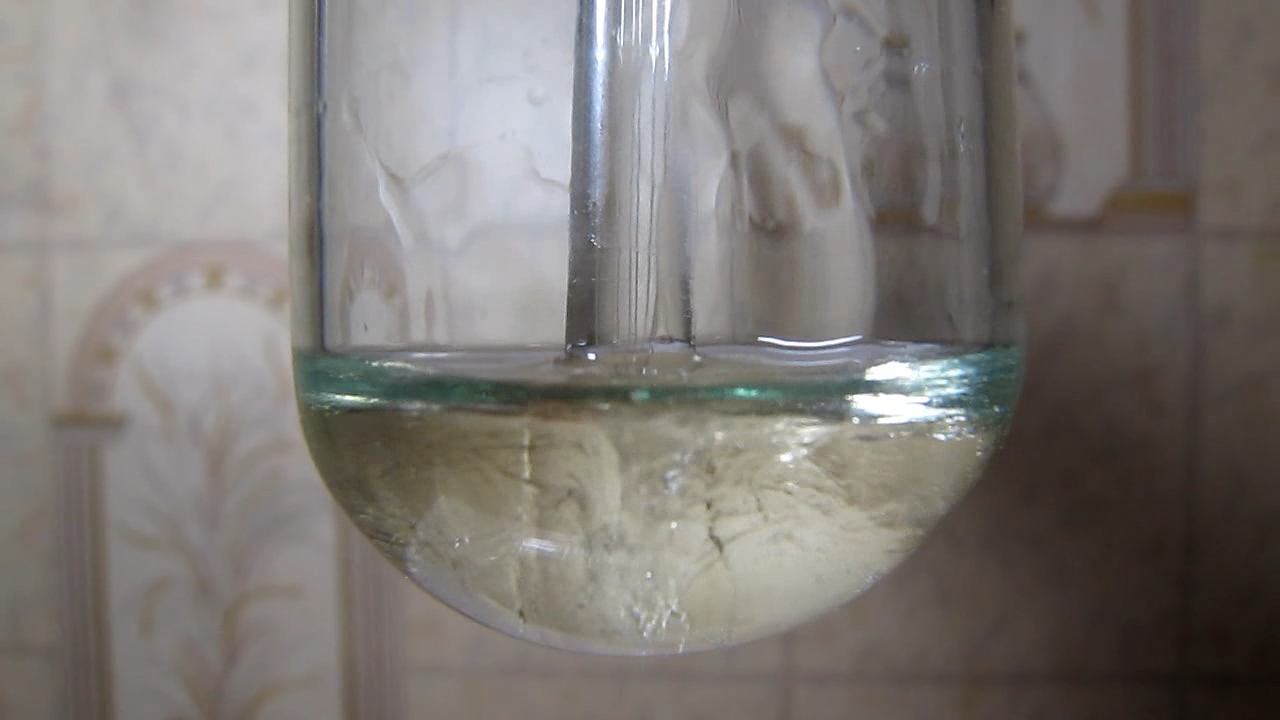
|
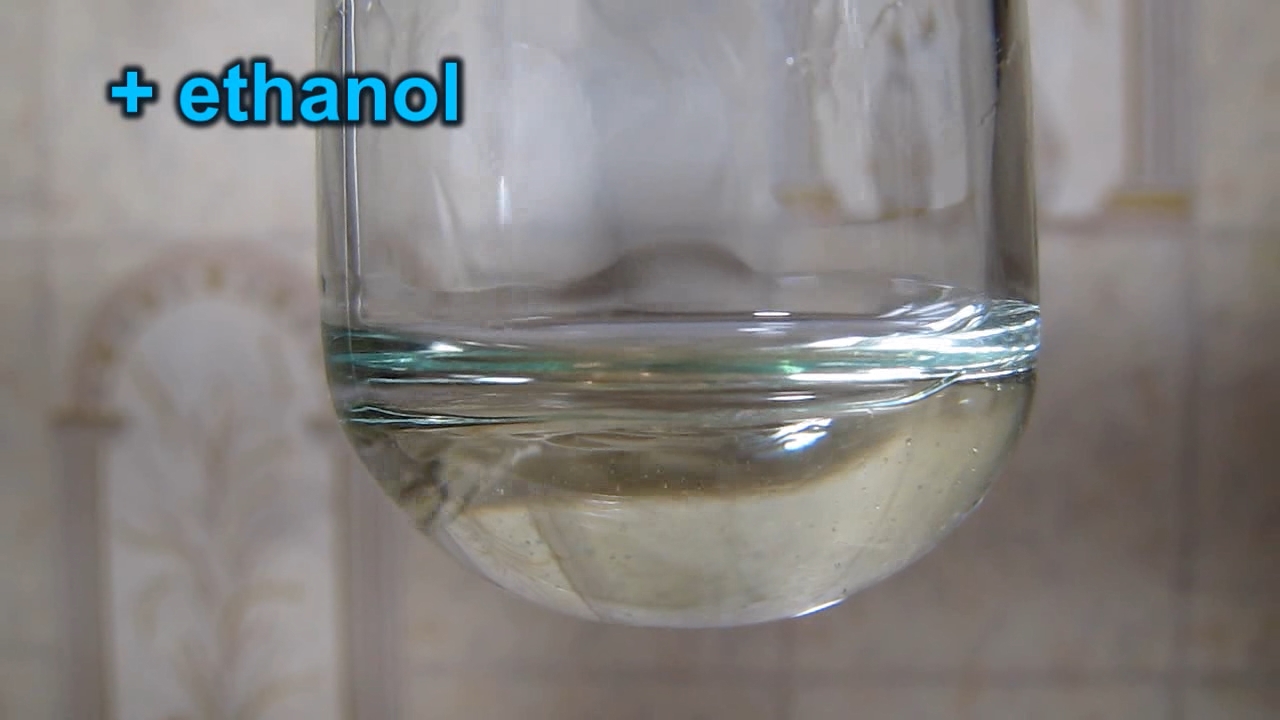
|

|
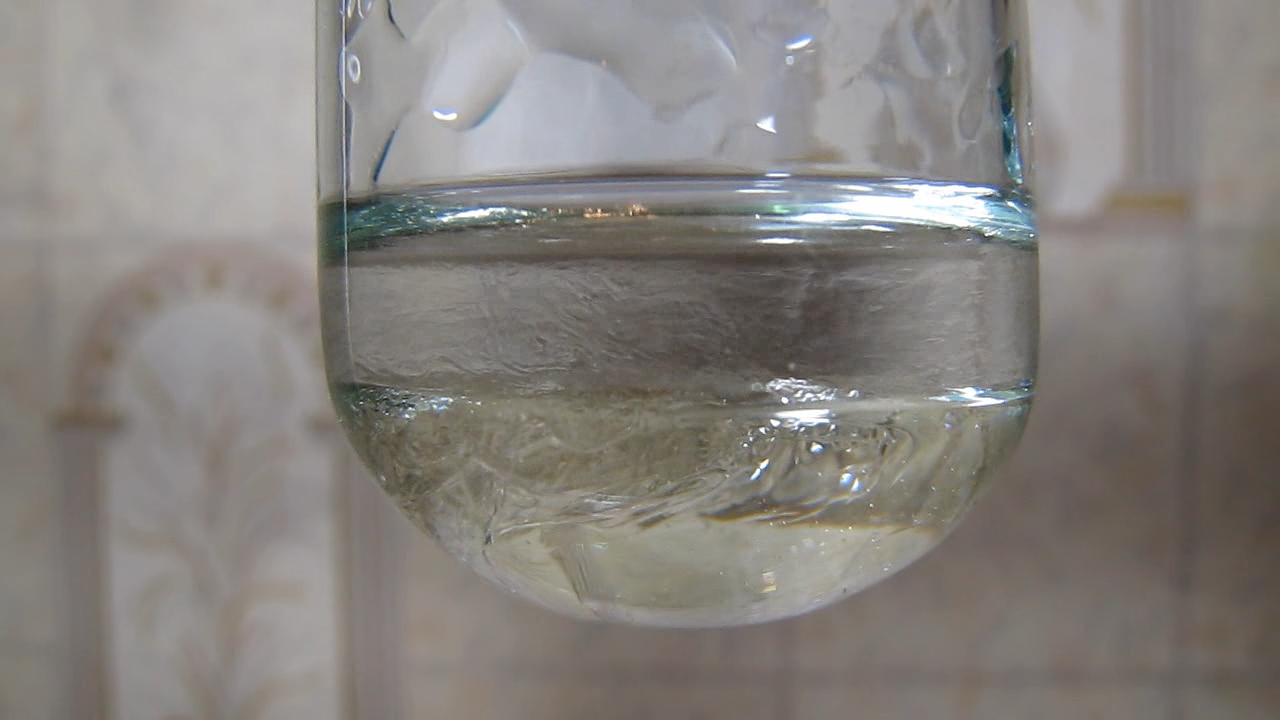
|
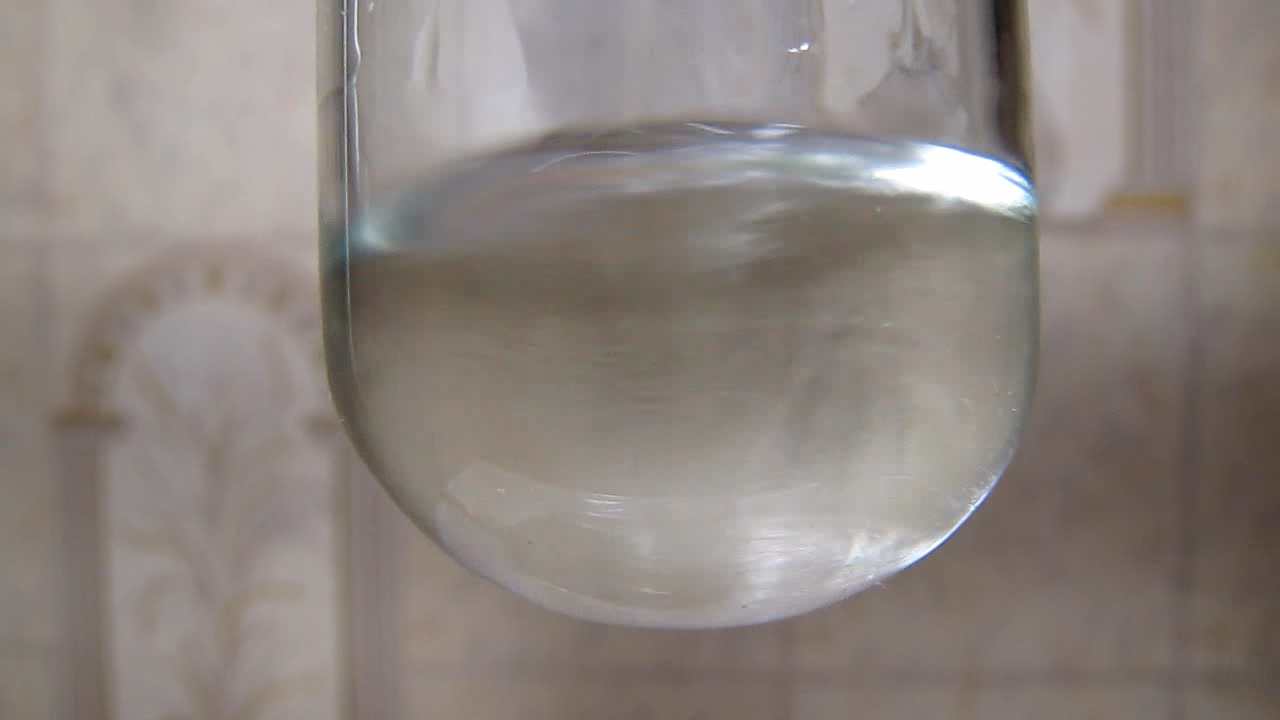
|
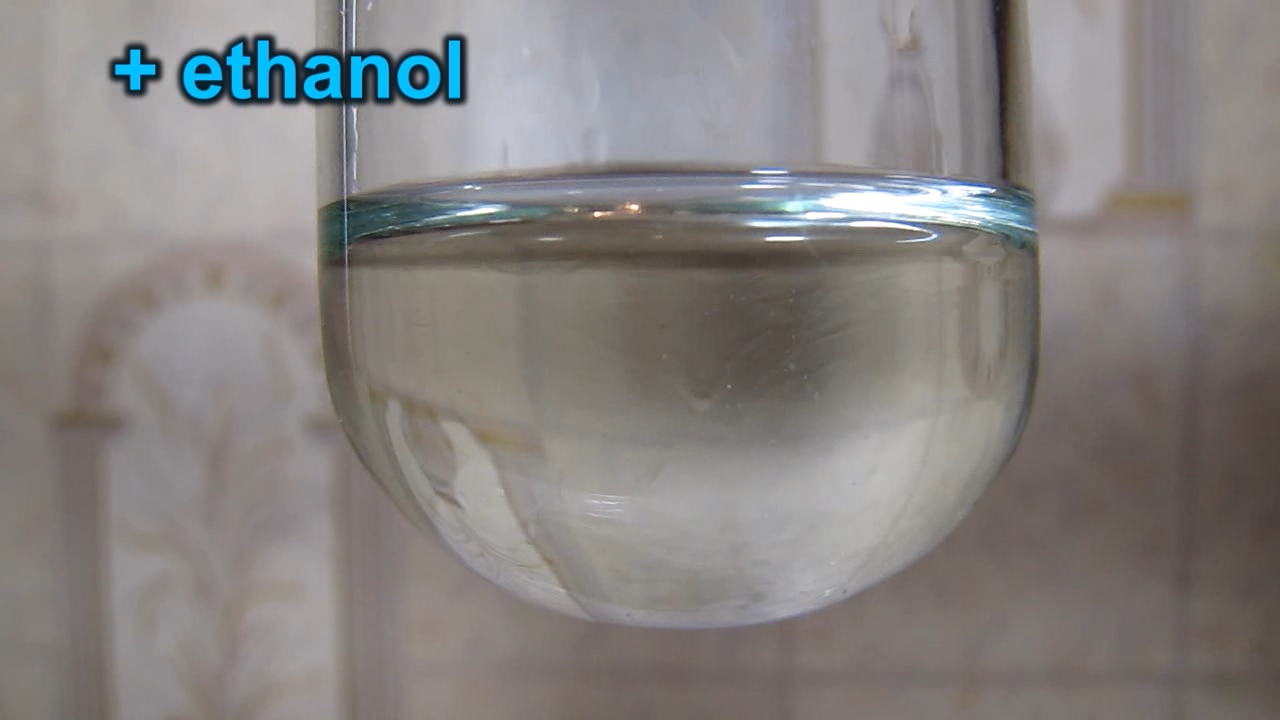
|
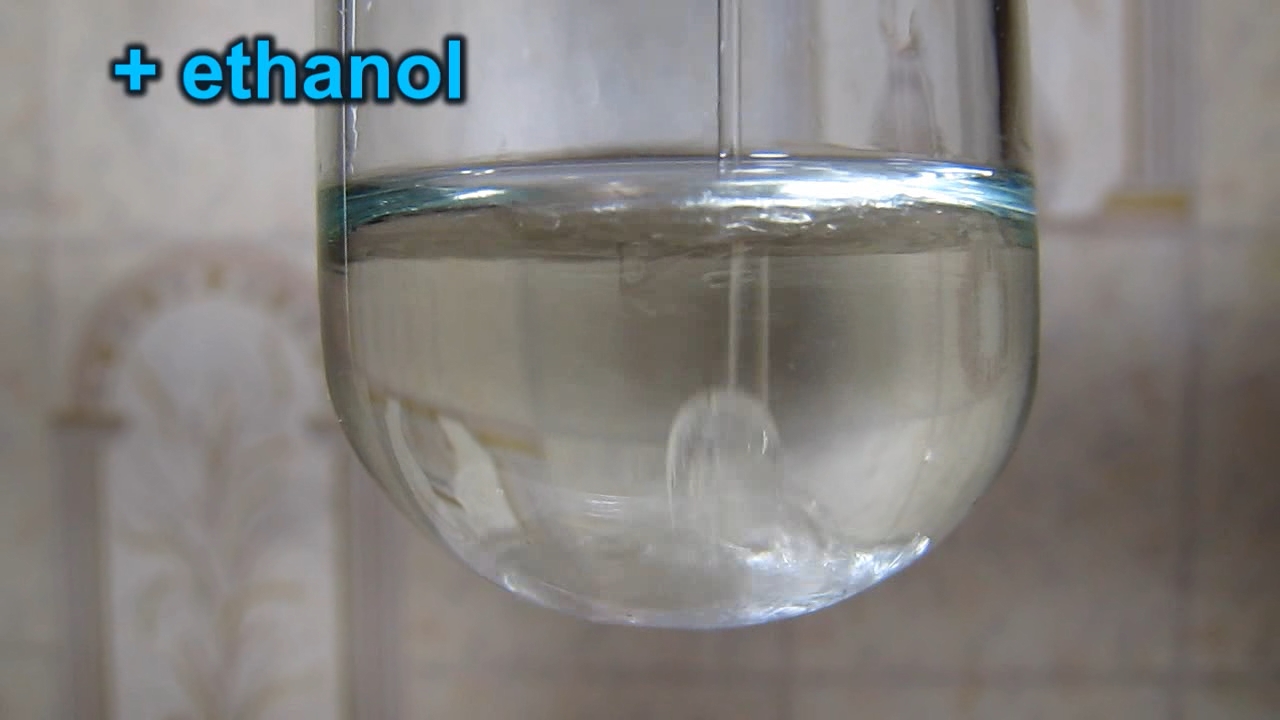
|
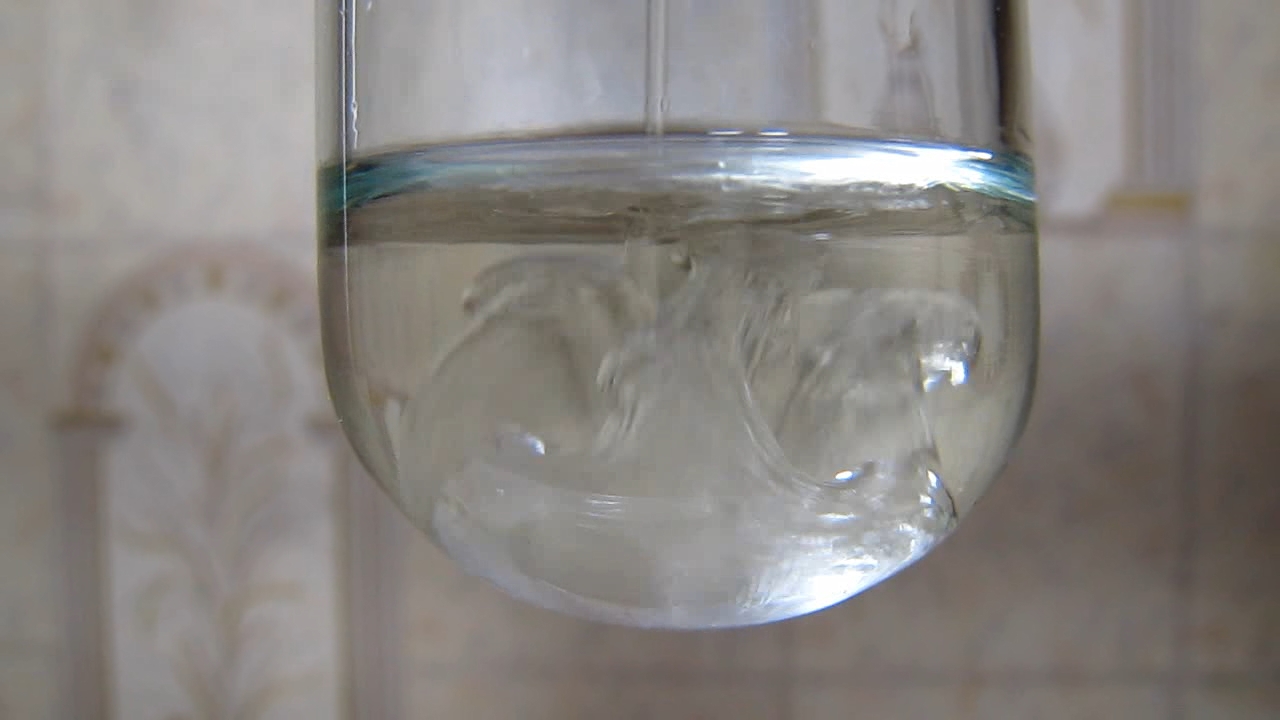
|

|
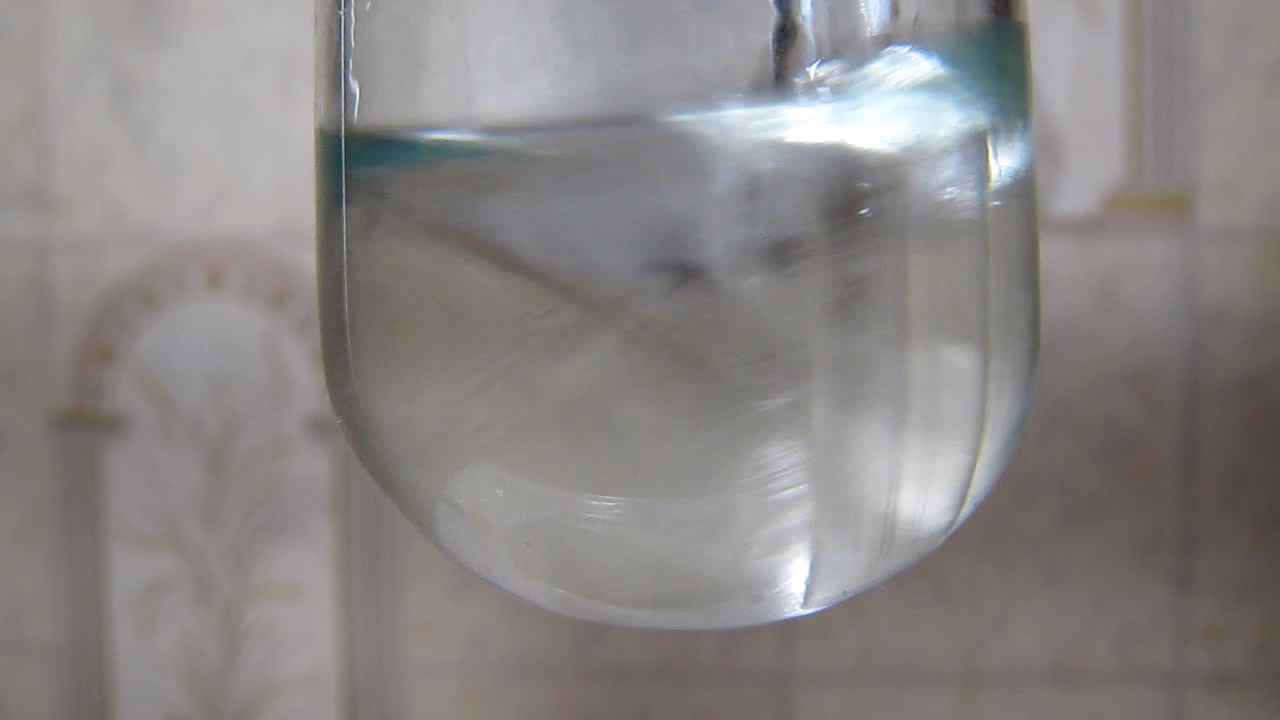
|

|
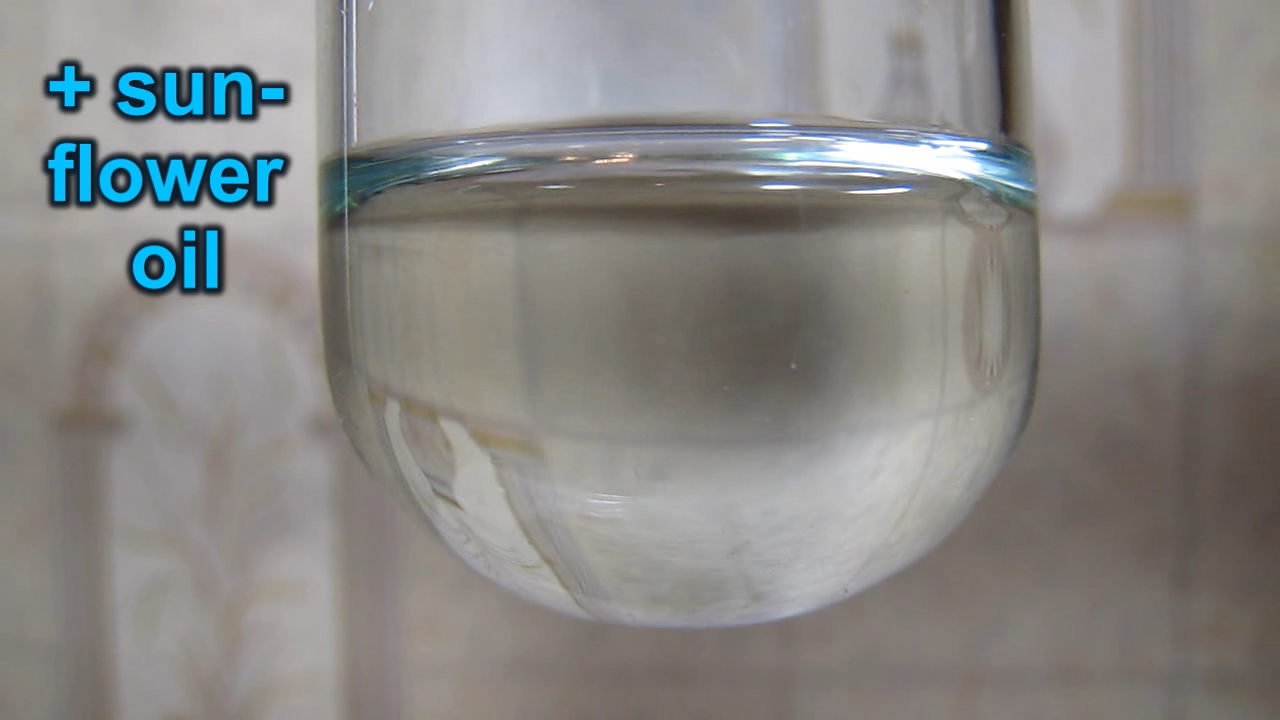
|
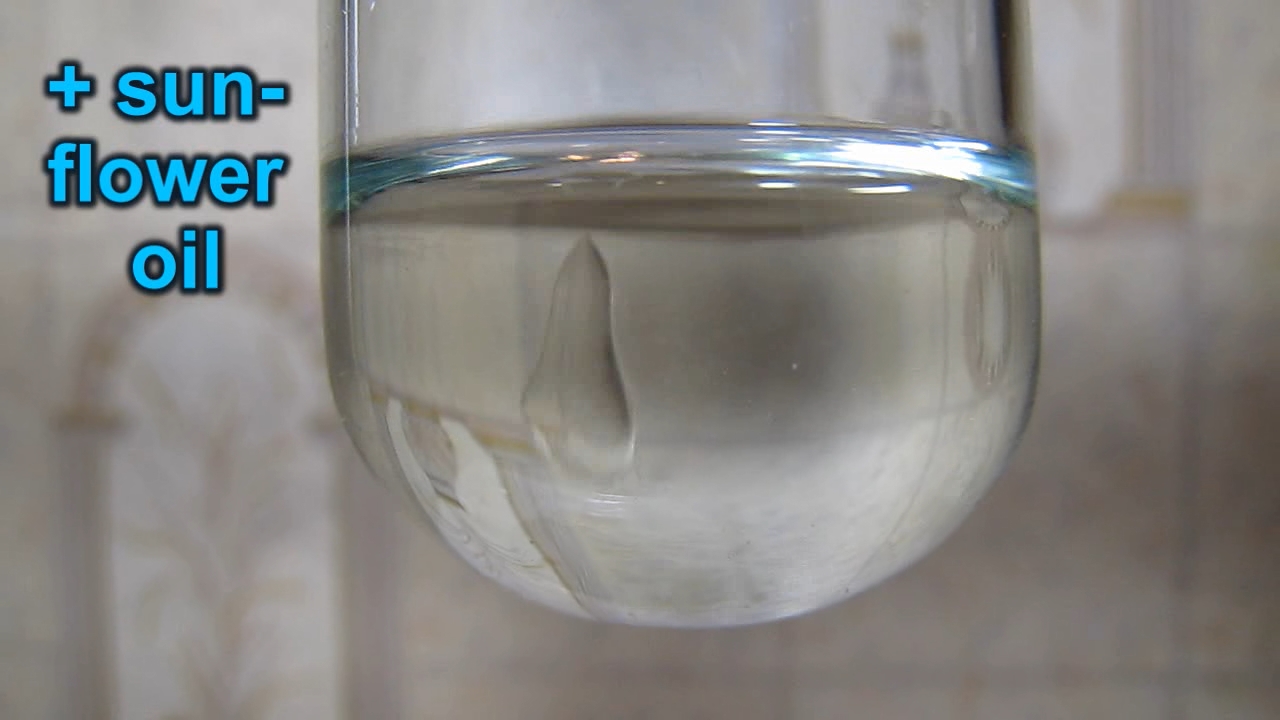
|
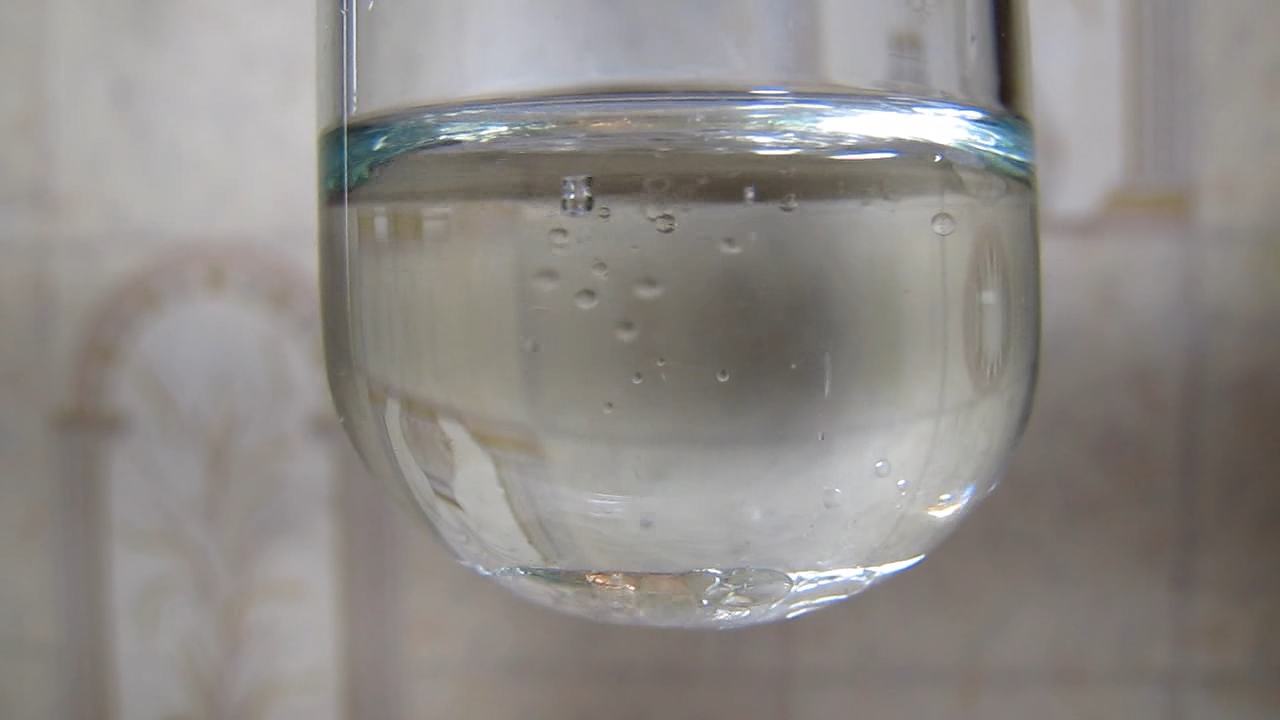
|

|

|
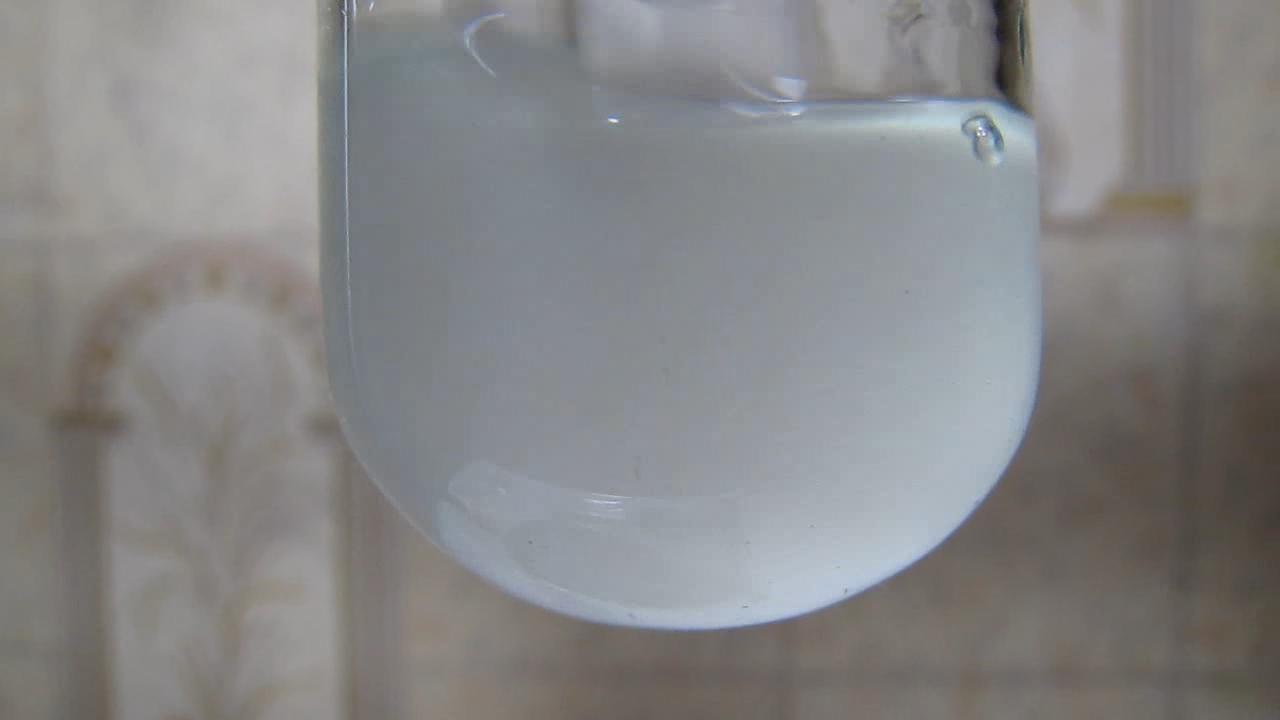
|
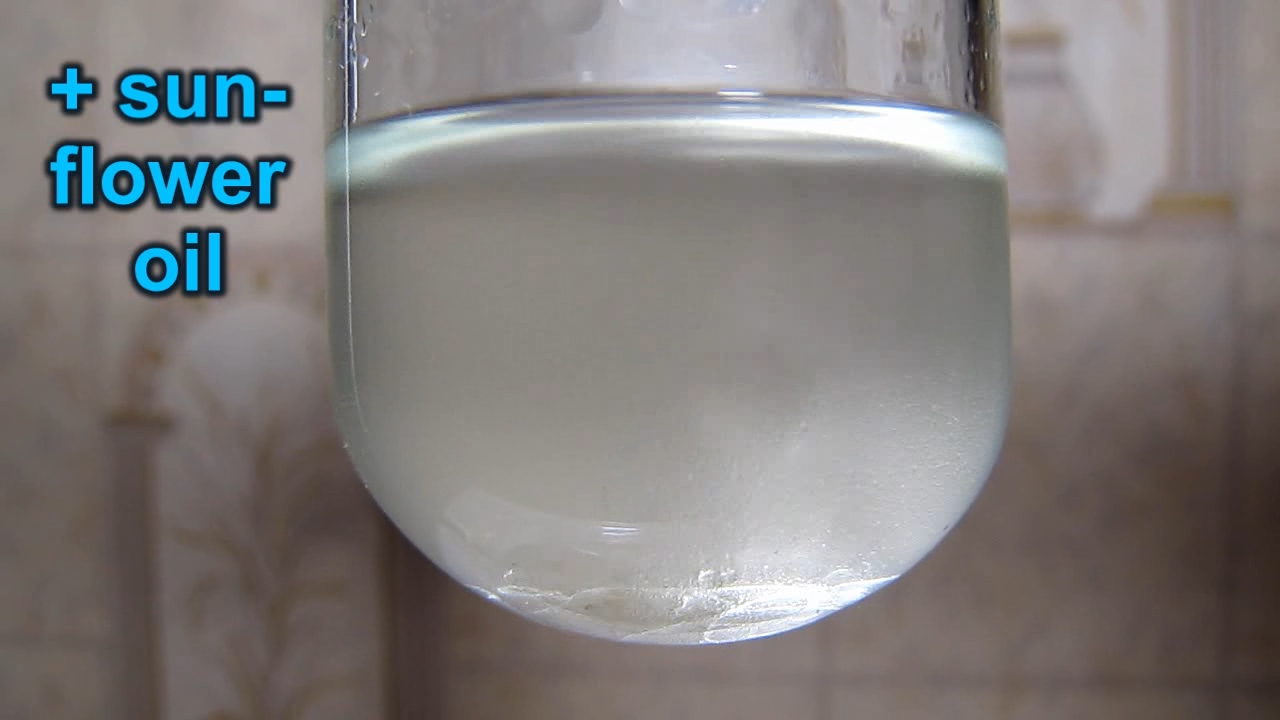
|
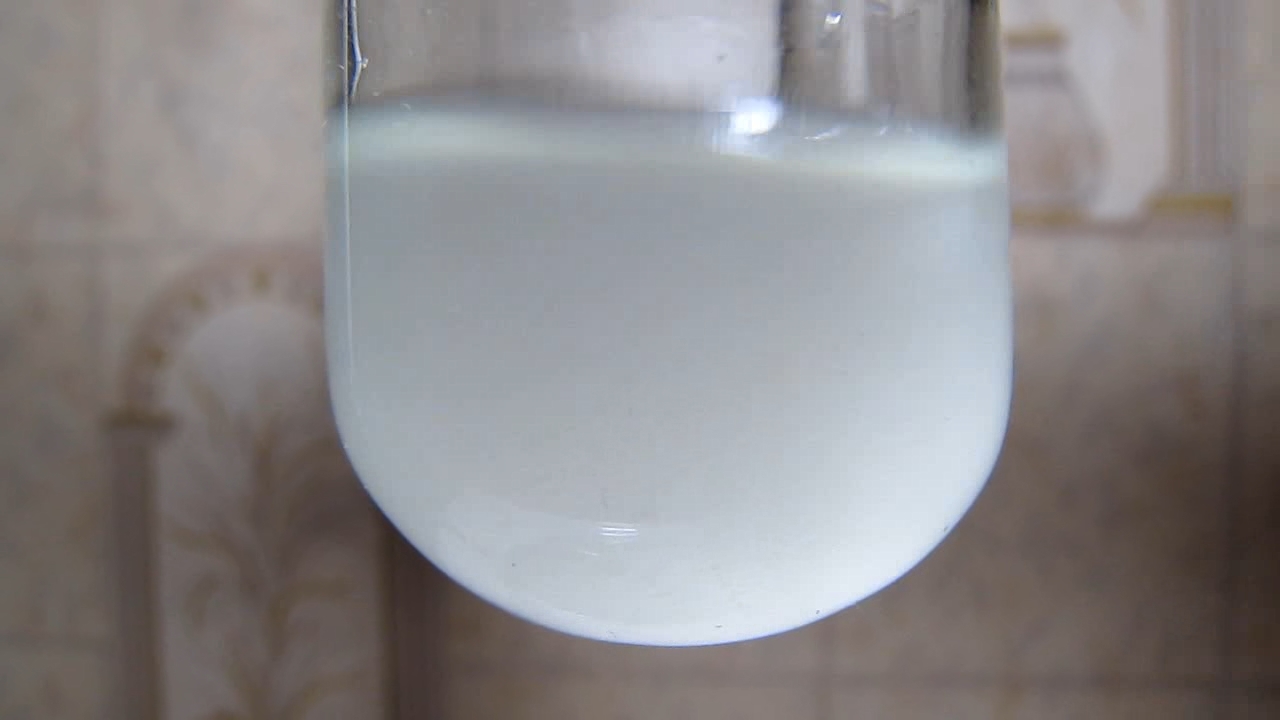
|
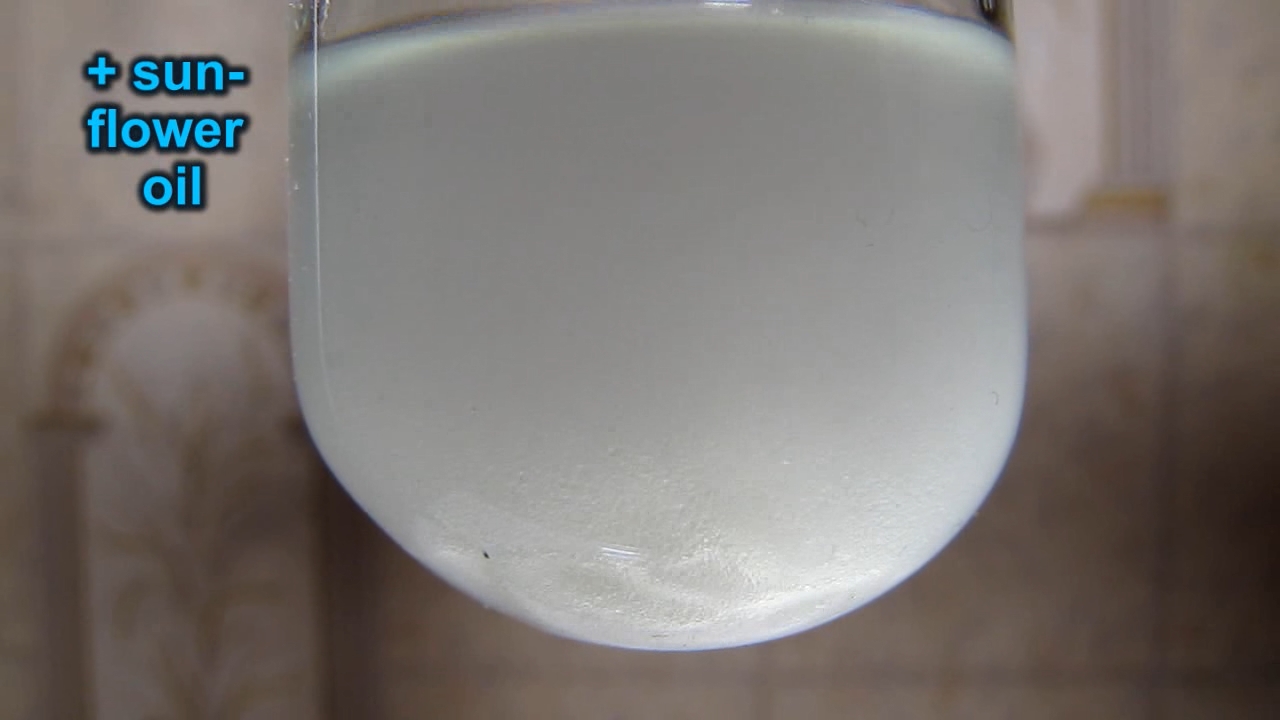
|
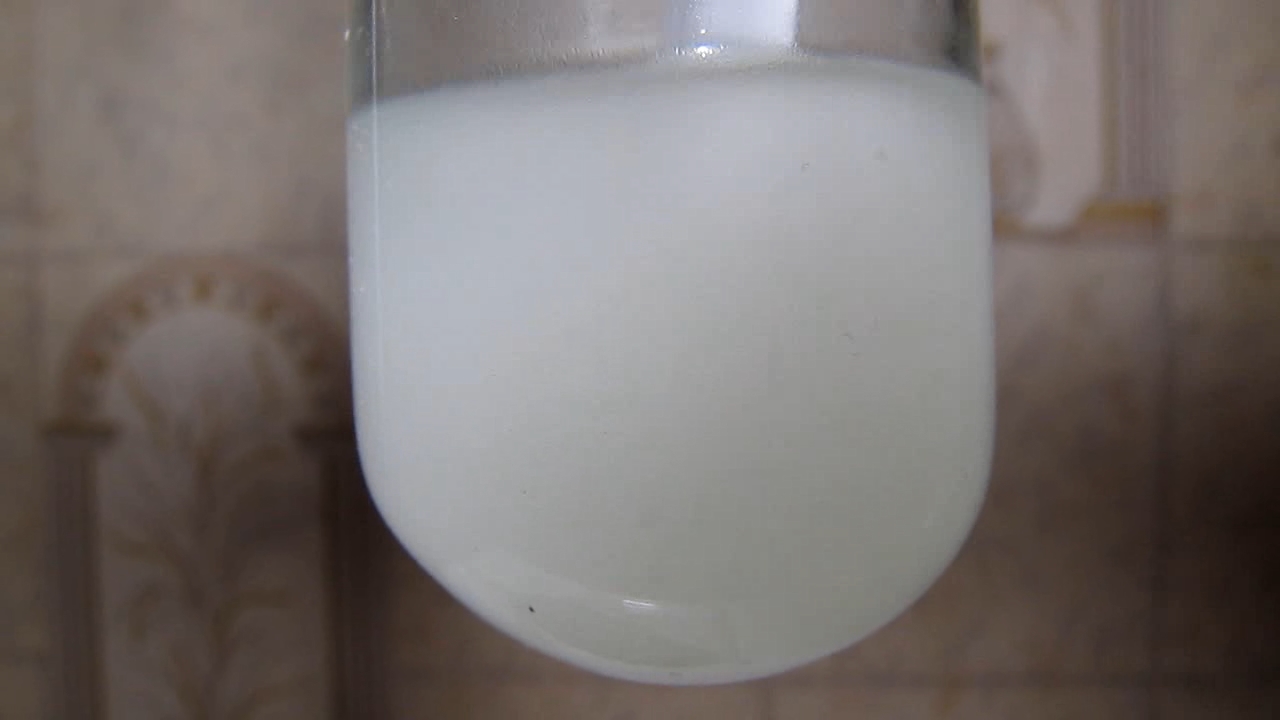
|
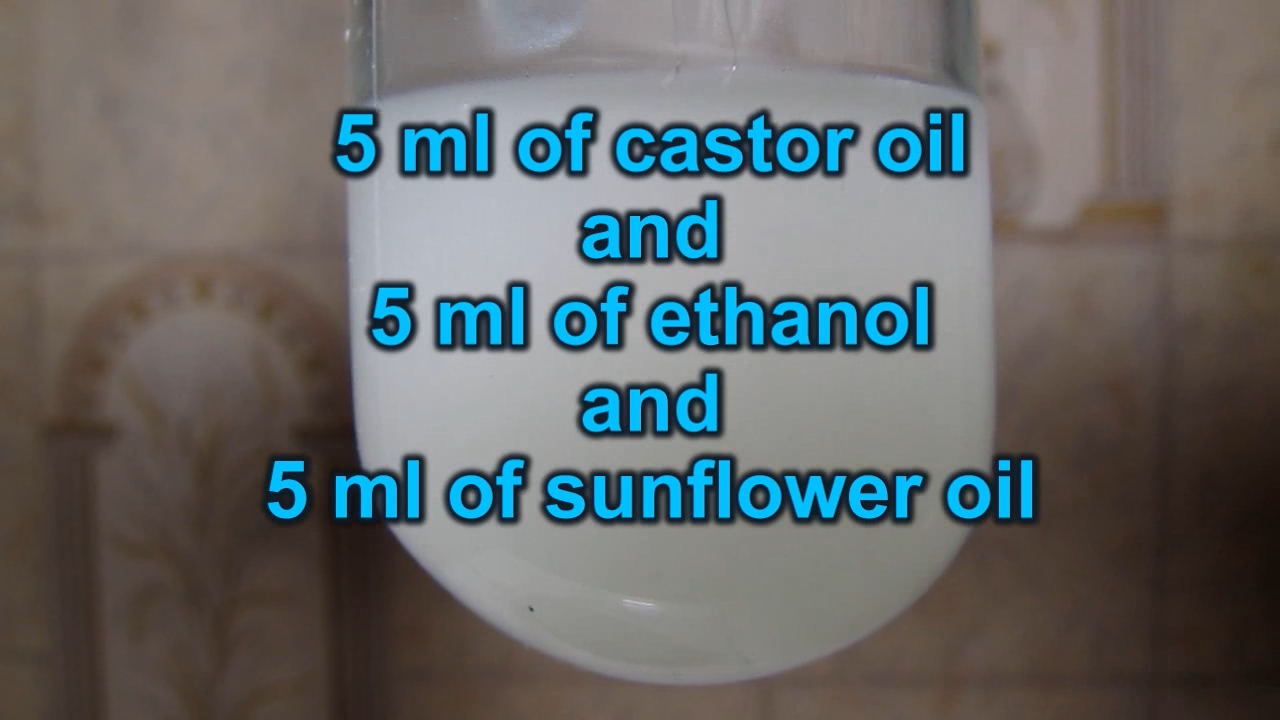
|

|
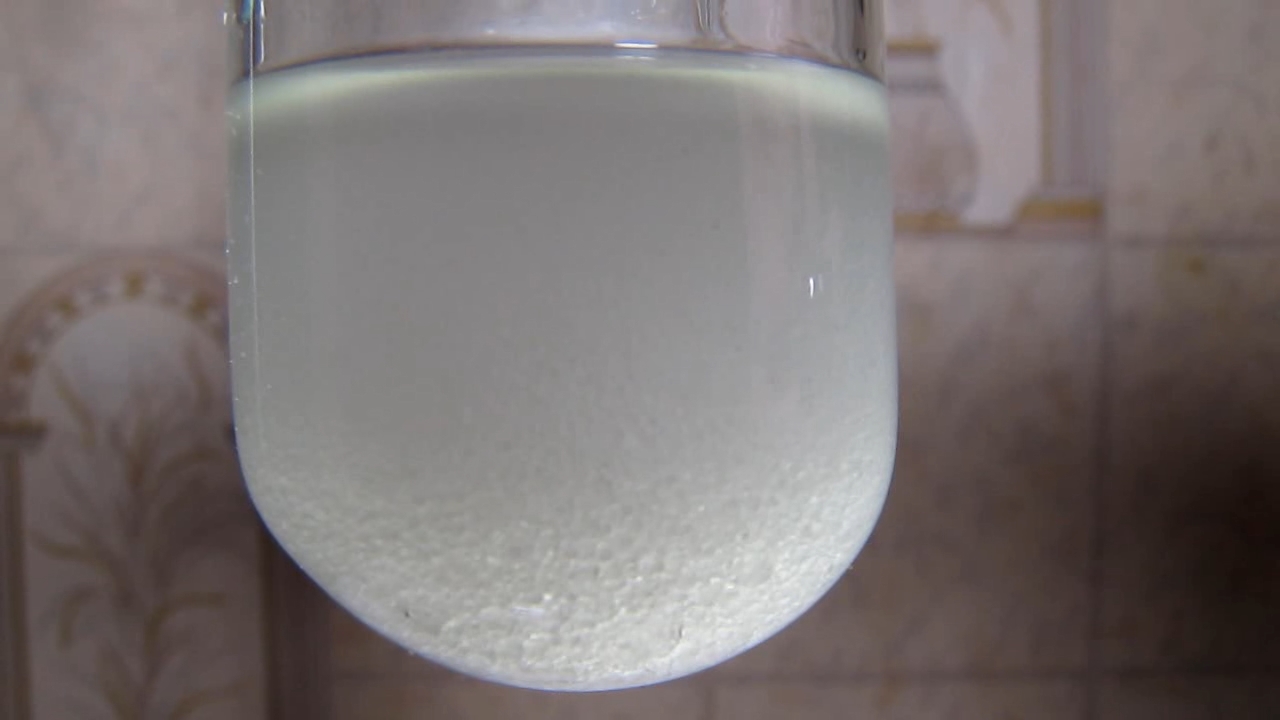
|
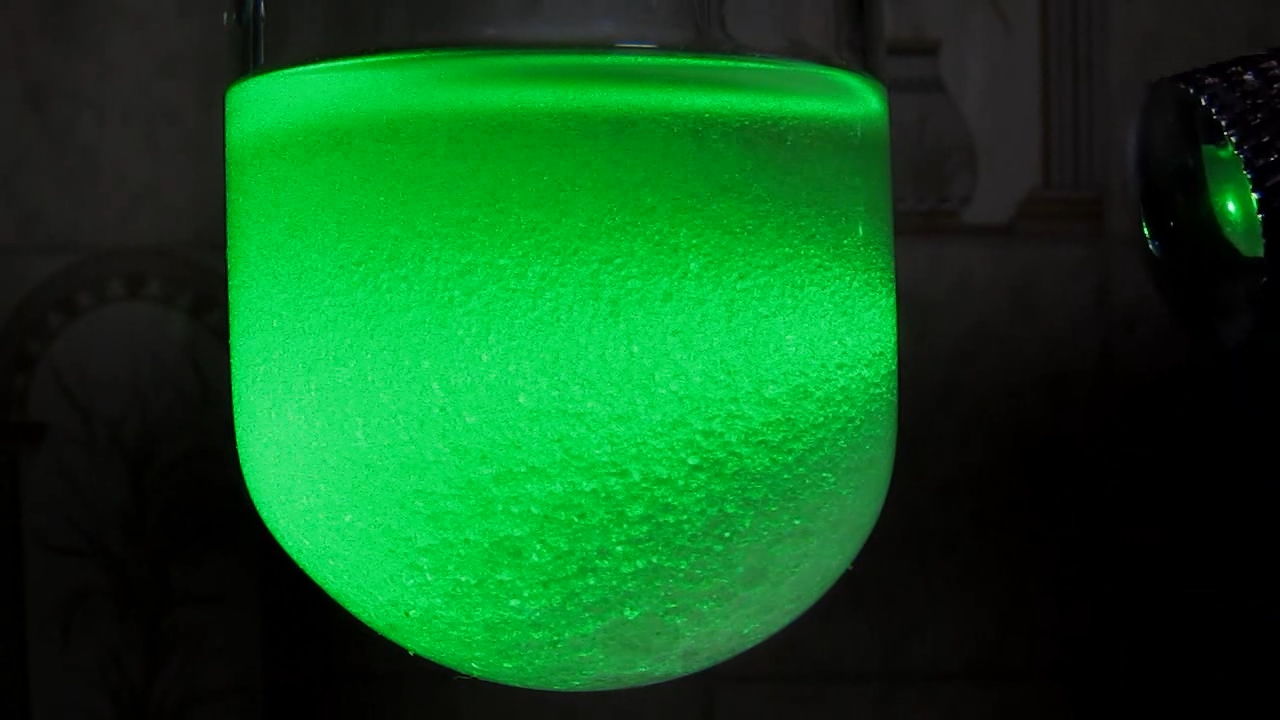
|
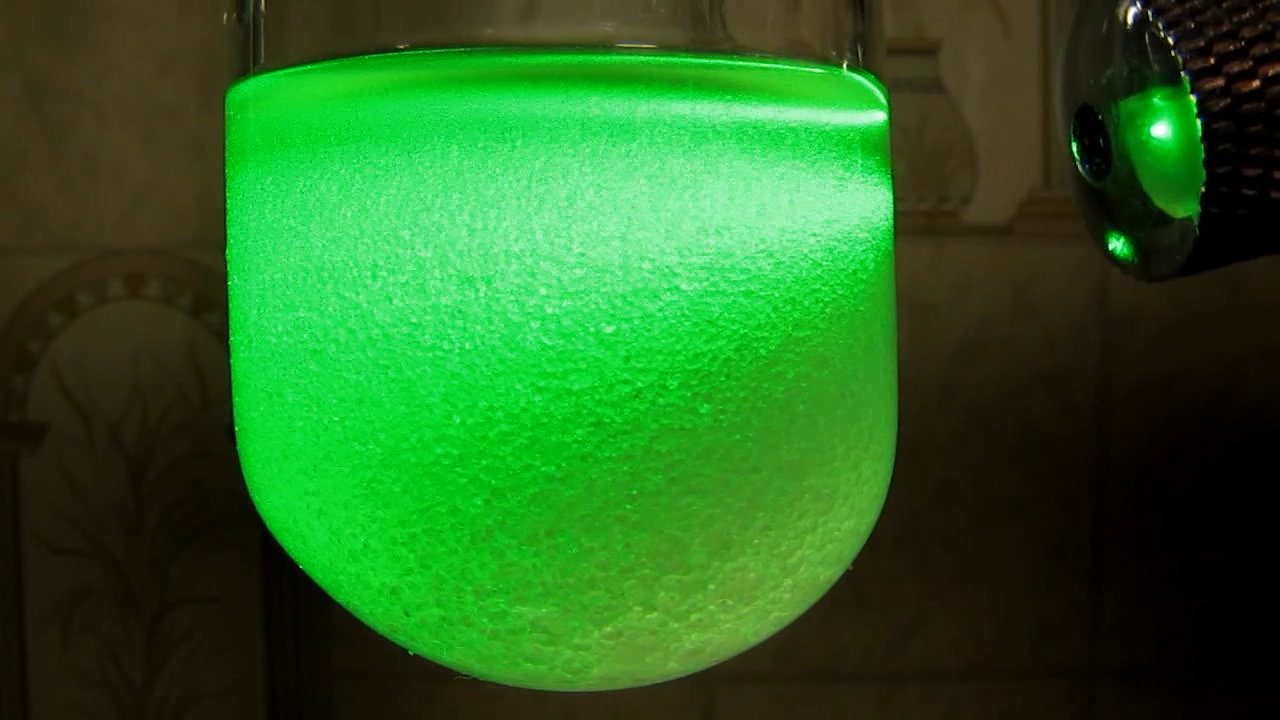
|
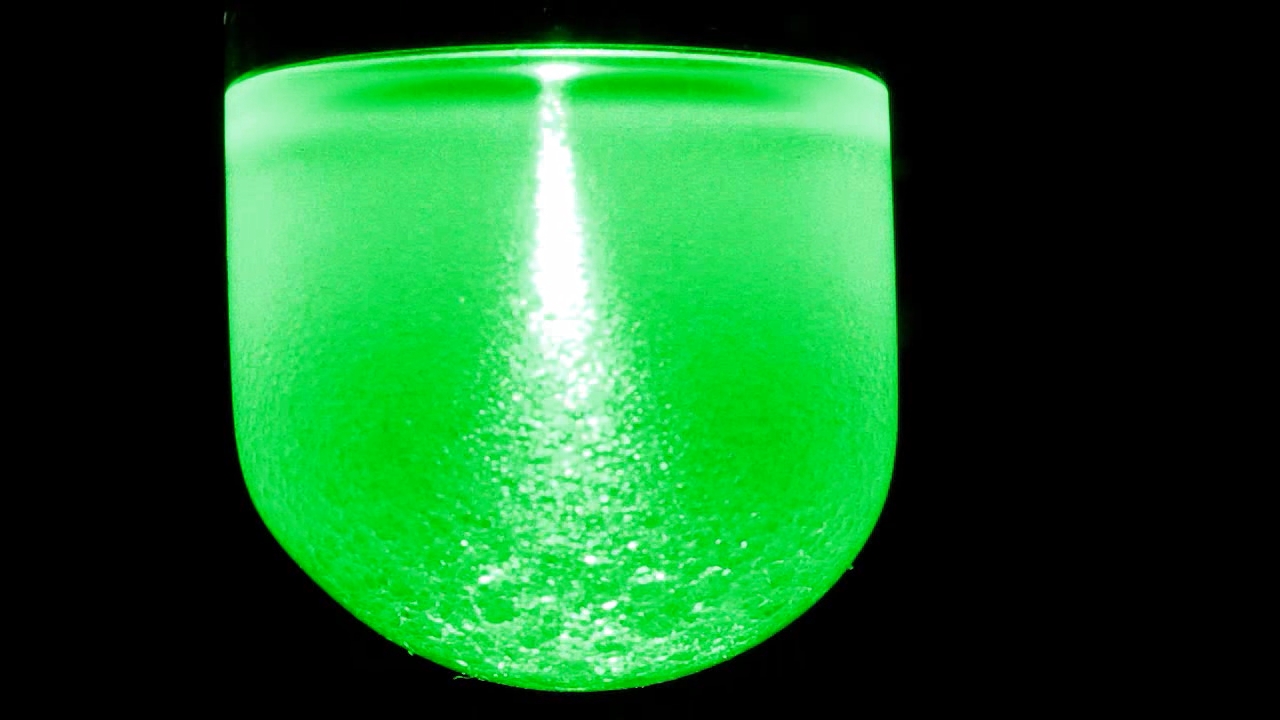
|

|
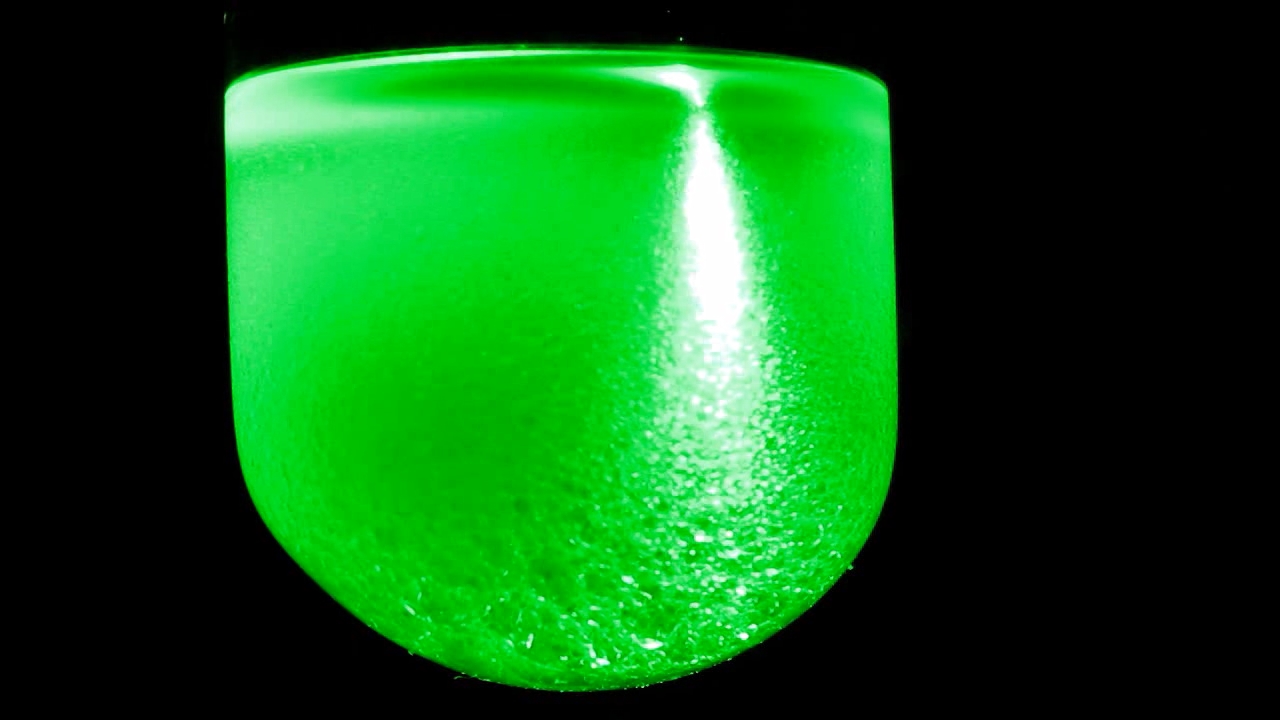
|
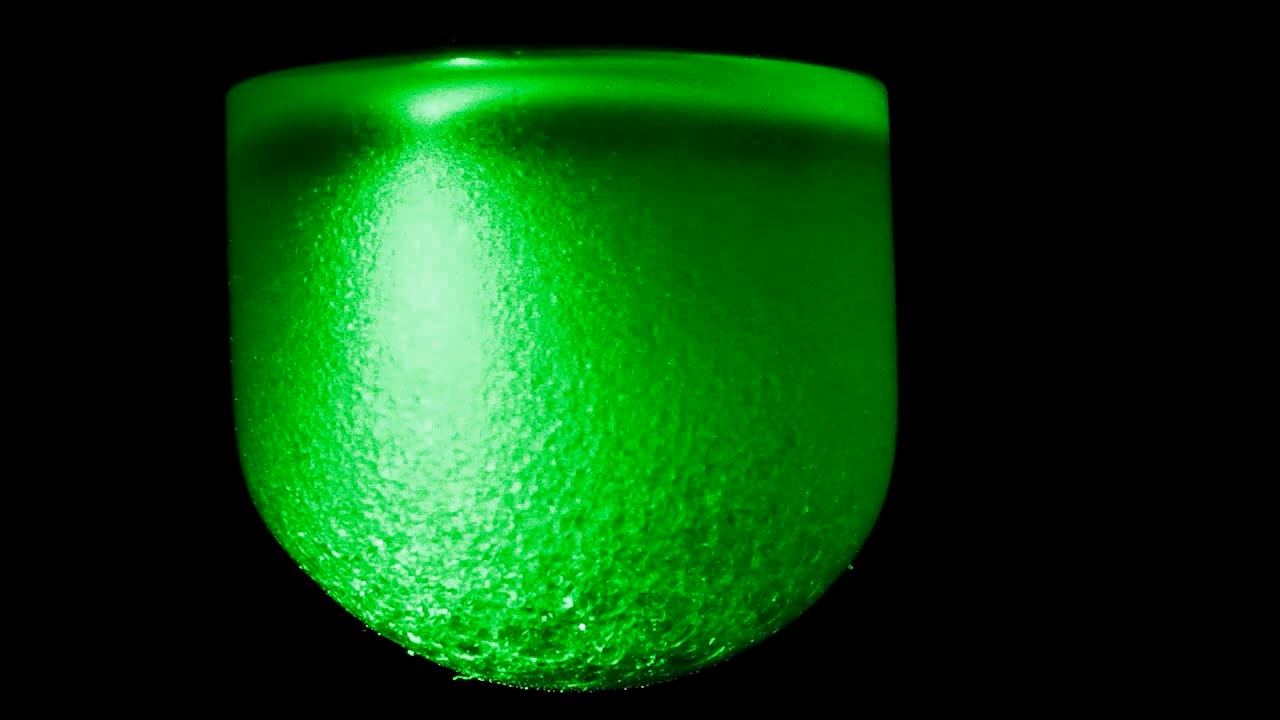
|
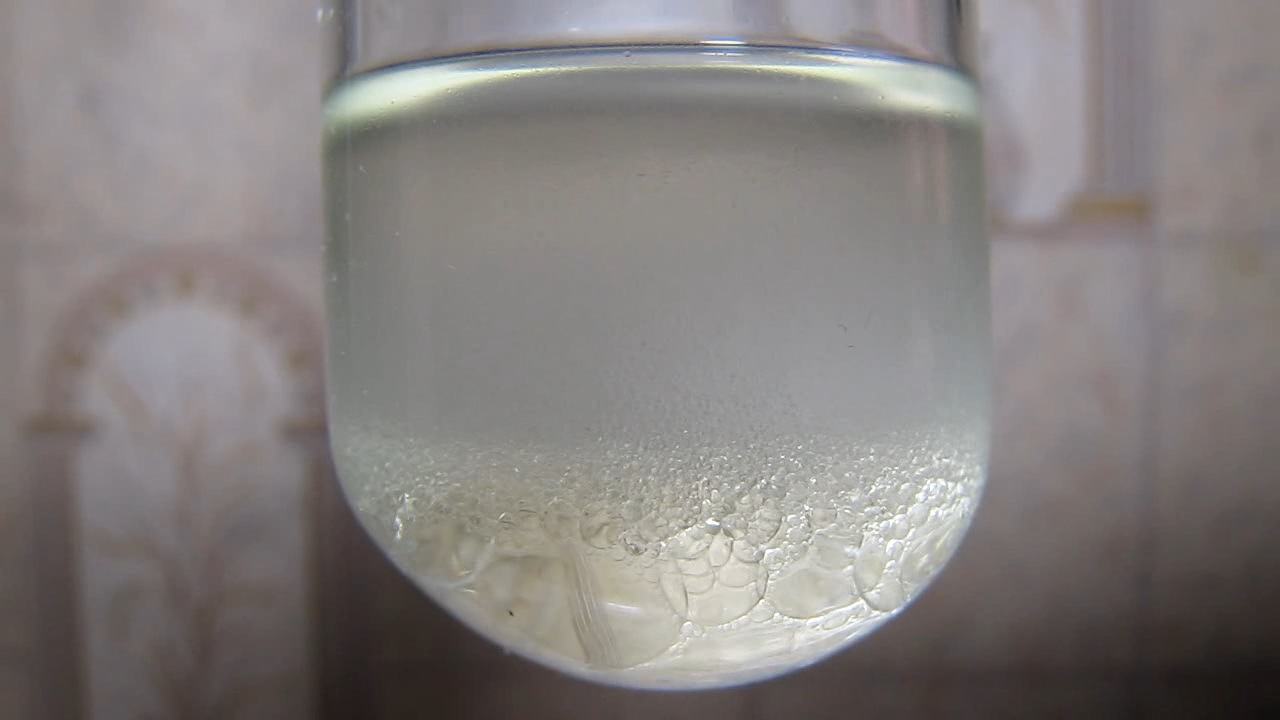
|
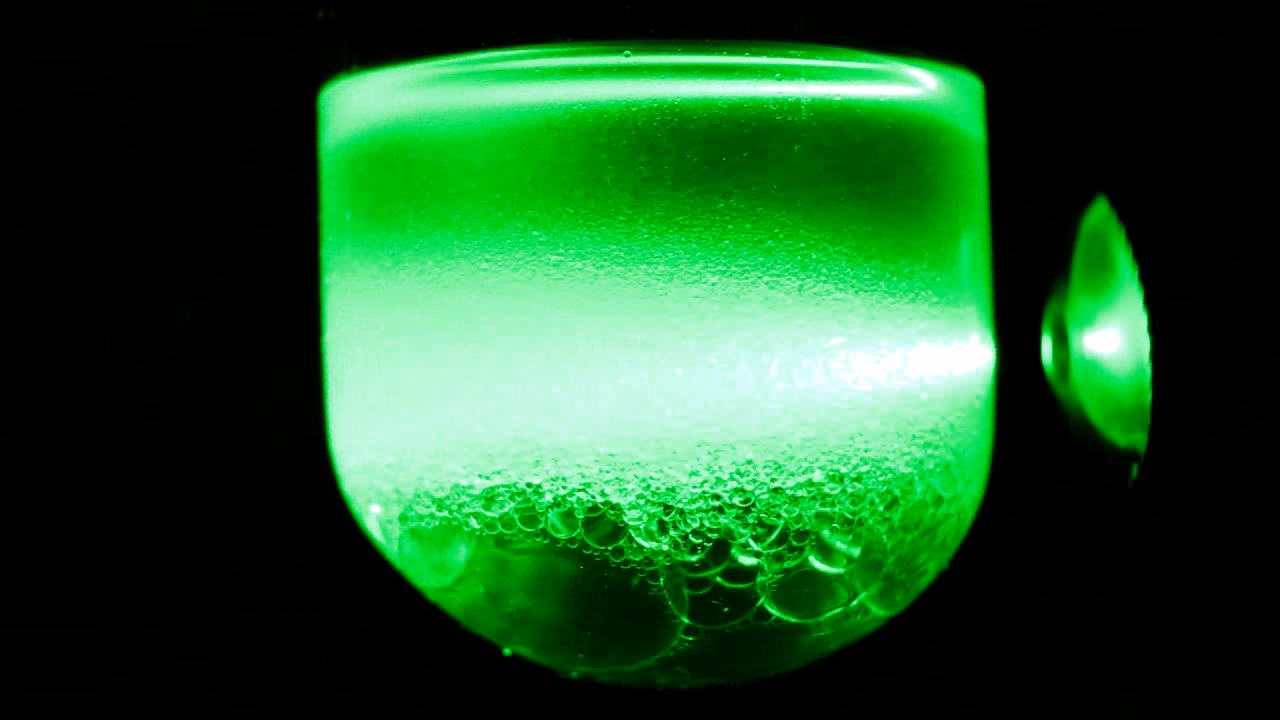
|
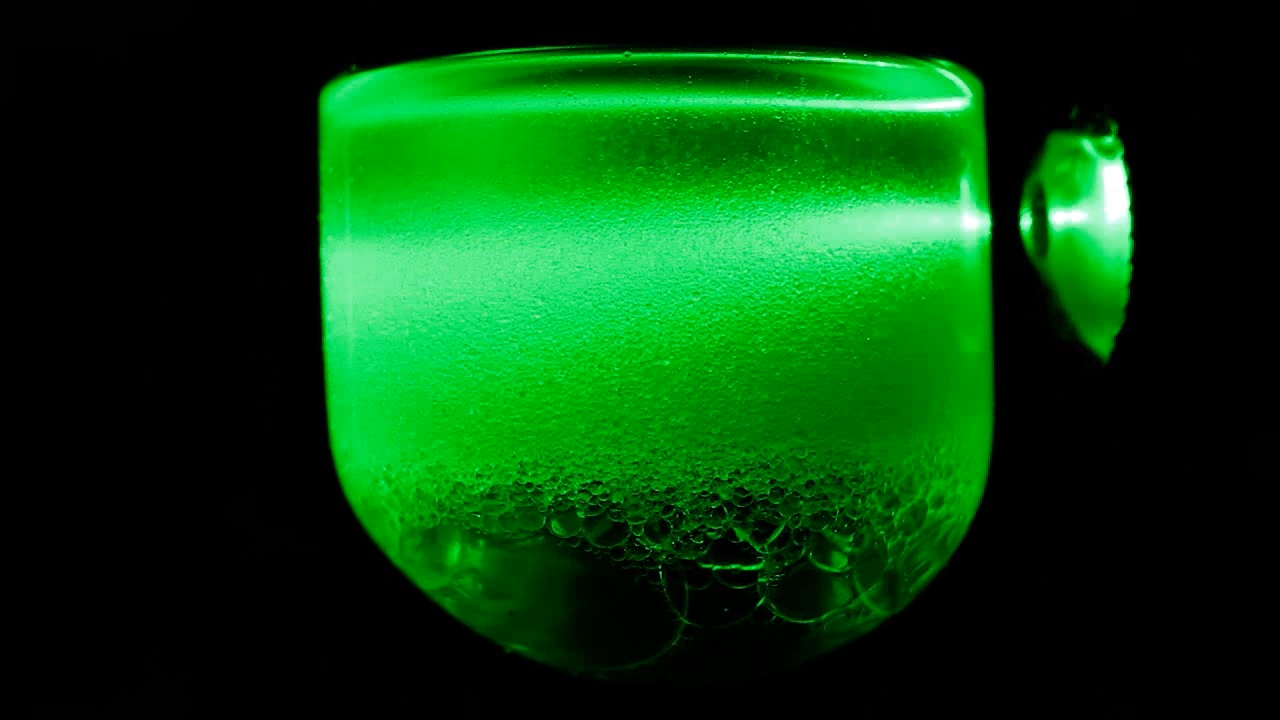
|
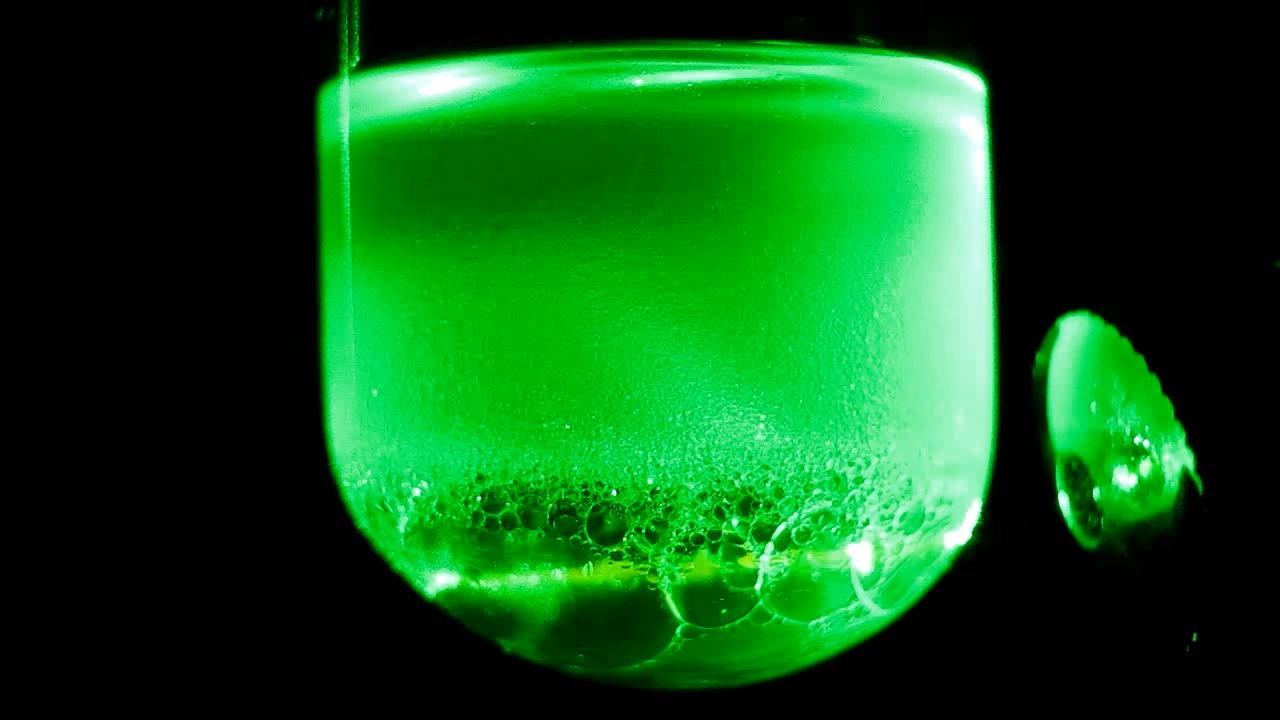
|
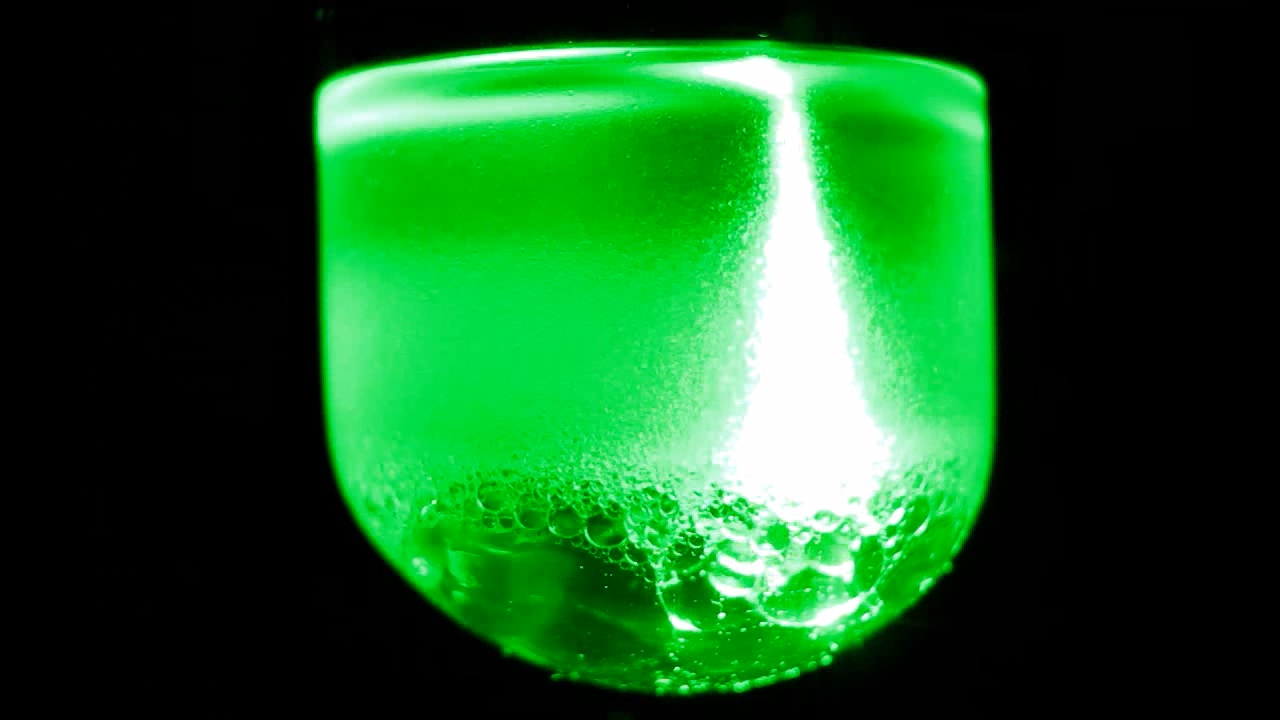
|
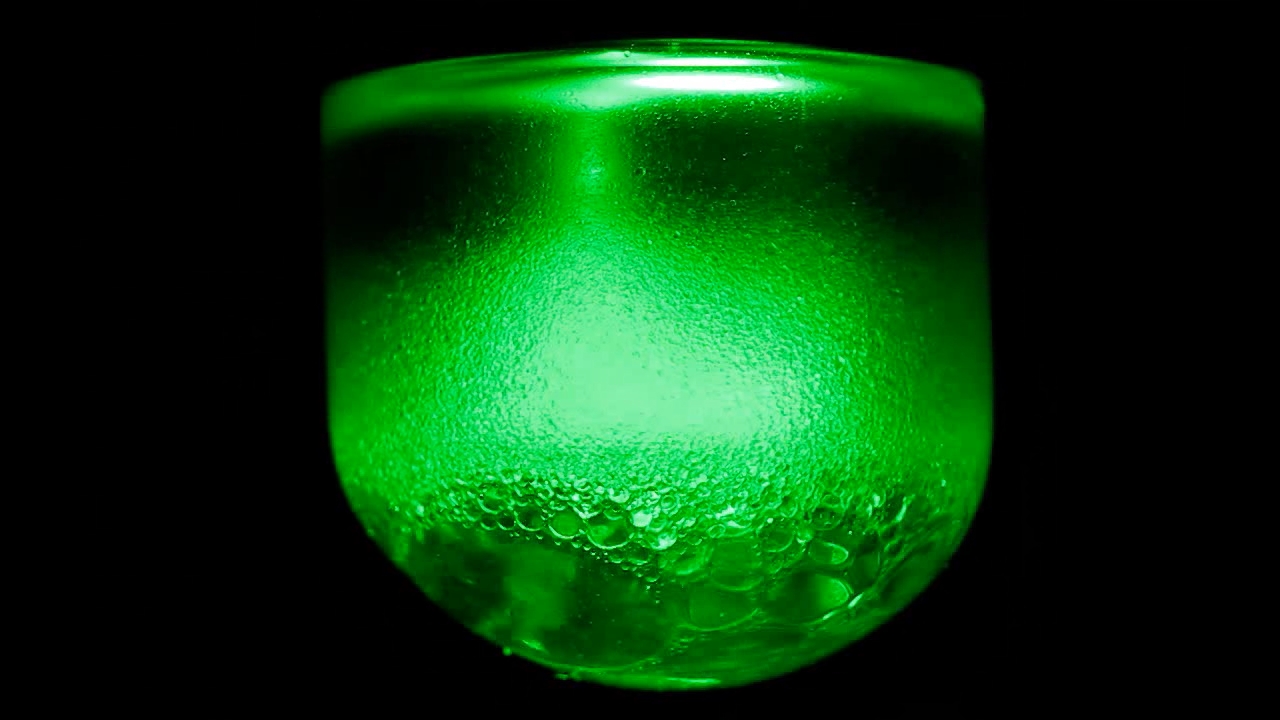
|
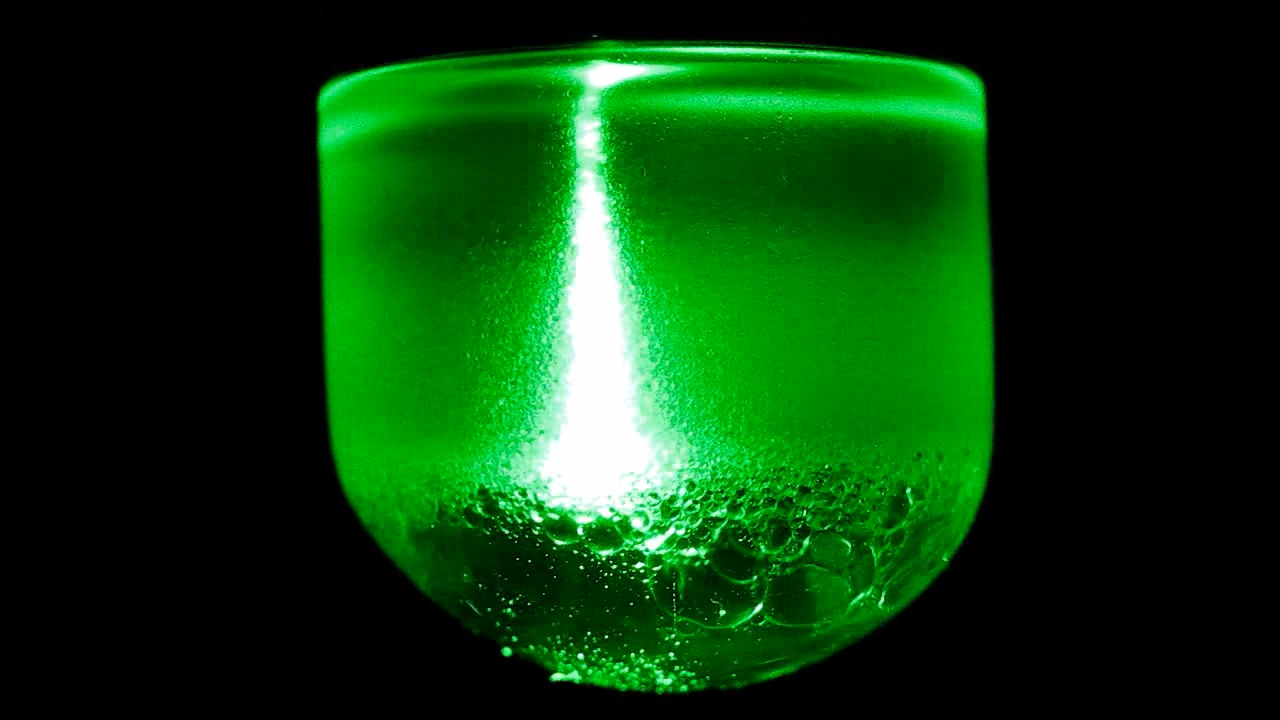
|
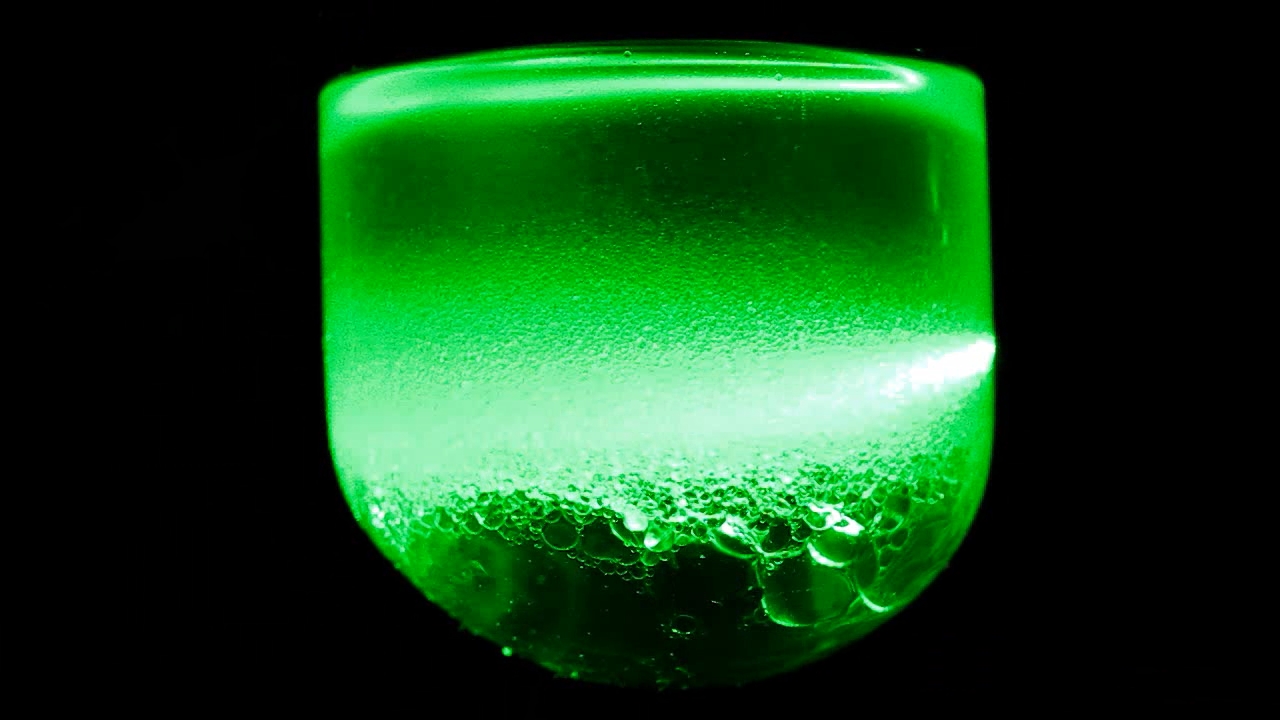
|
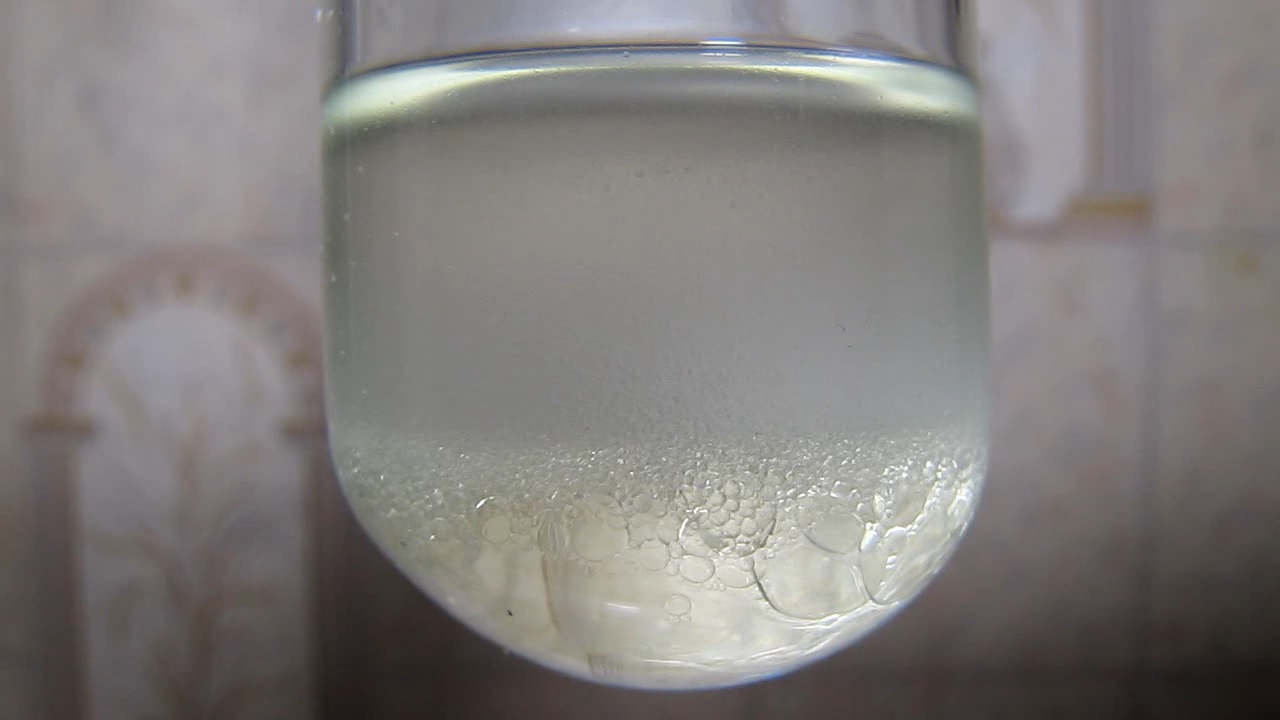
|

|

|
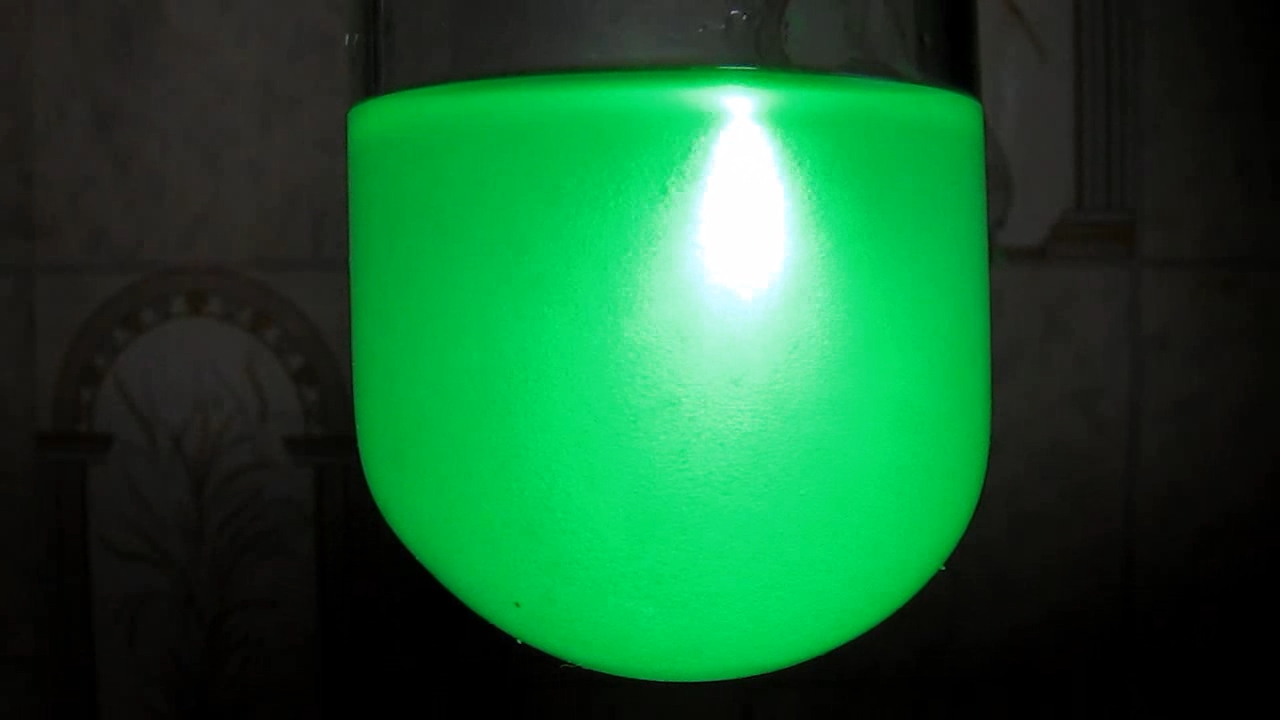
|

|
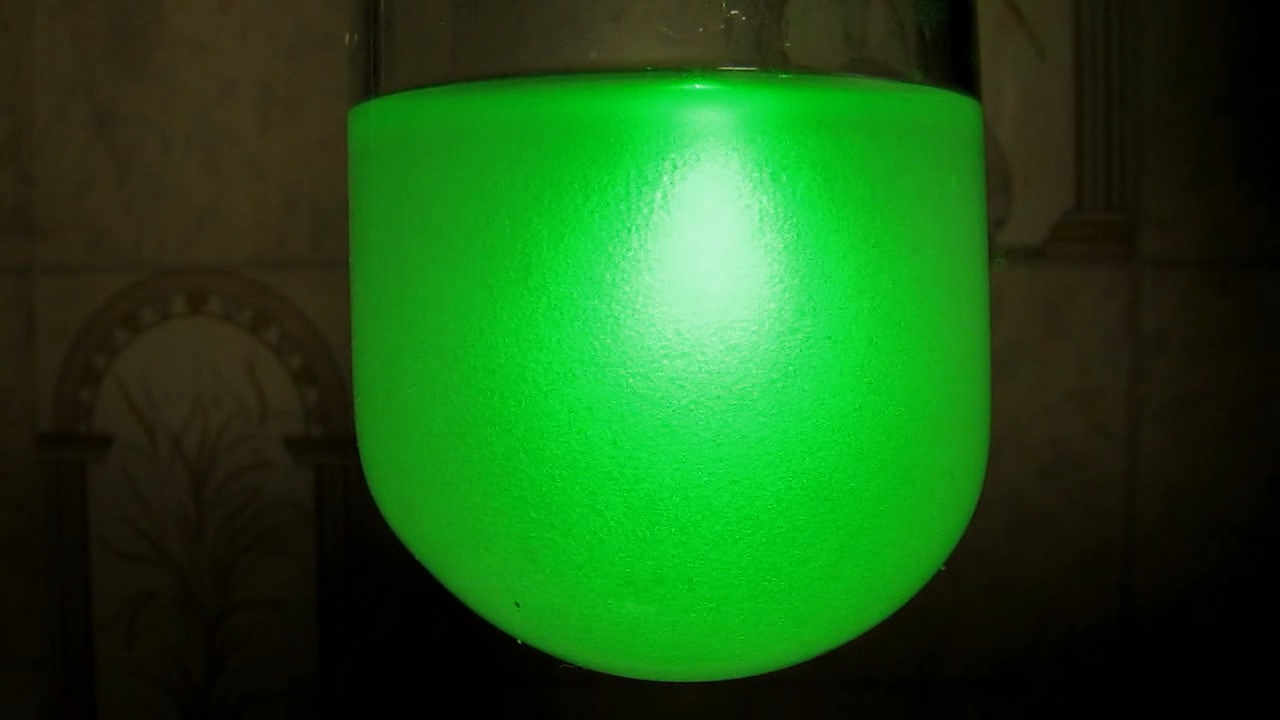
|
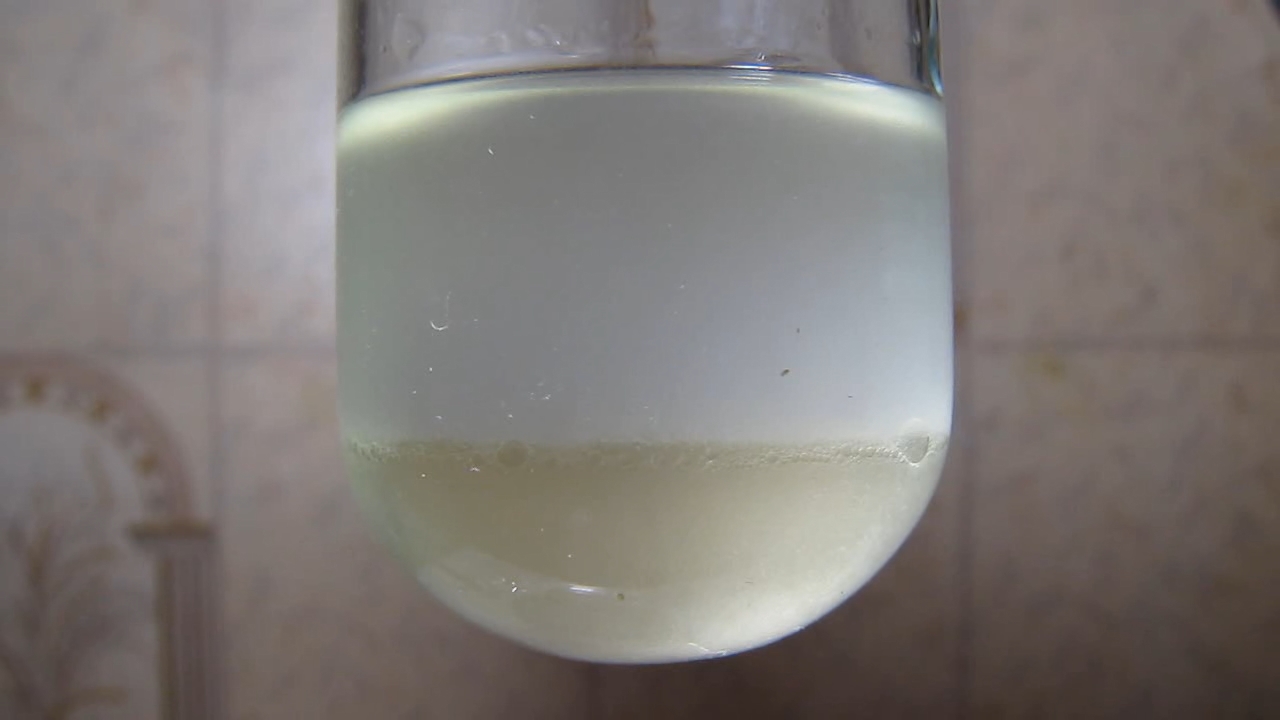
|

|
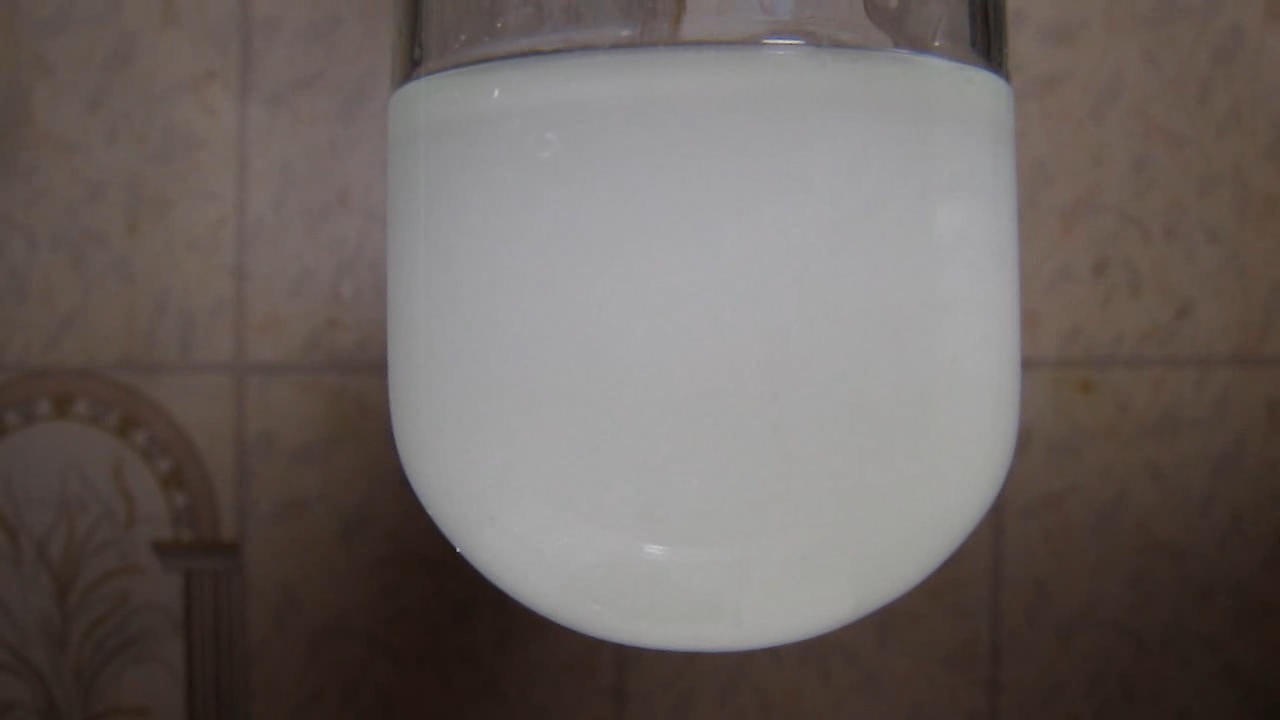
|
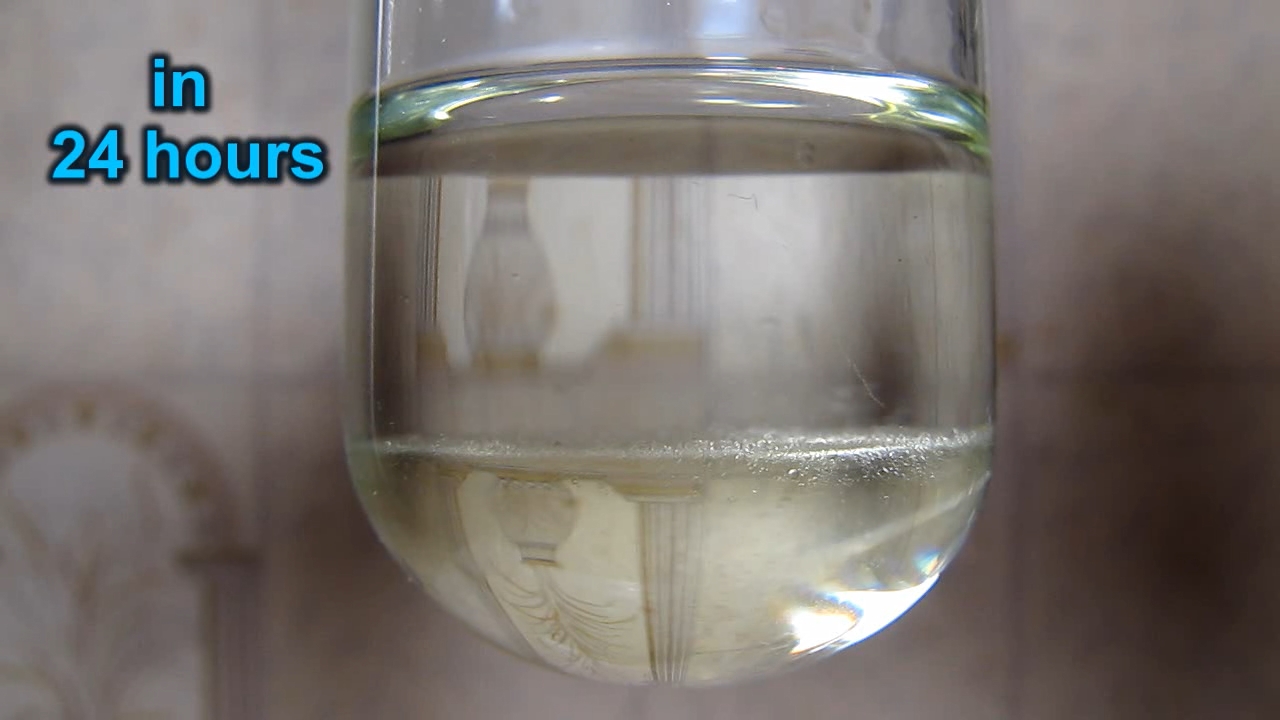
|
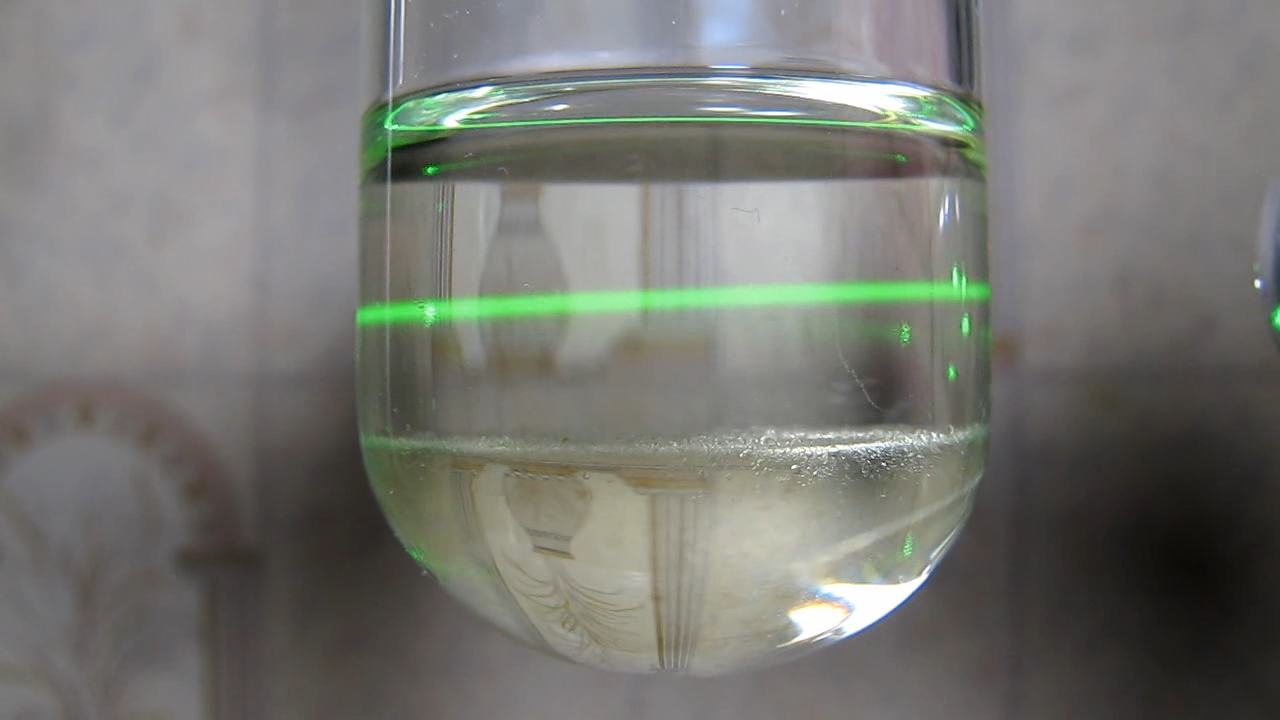
|
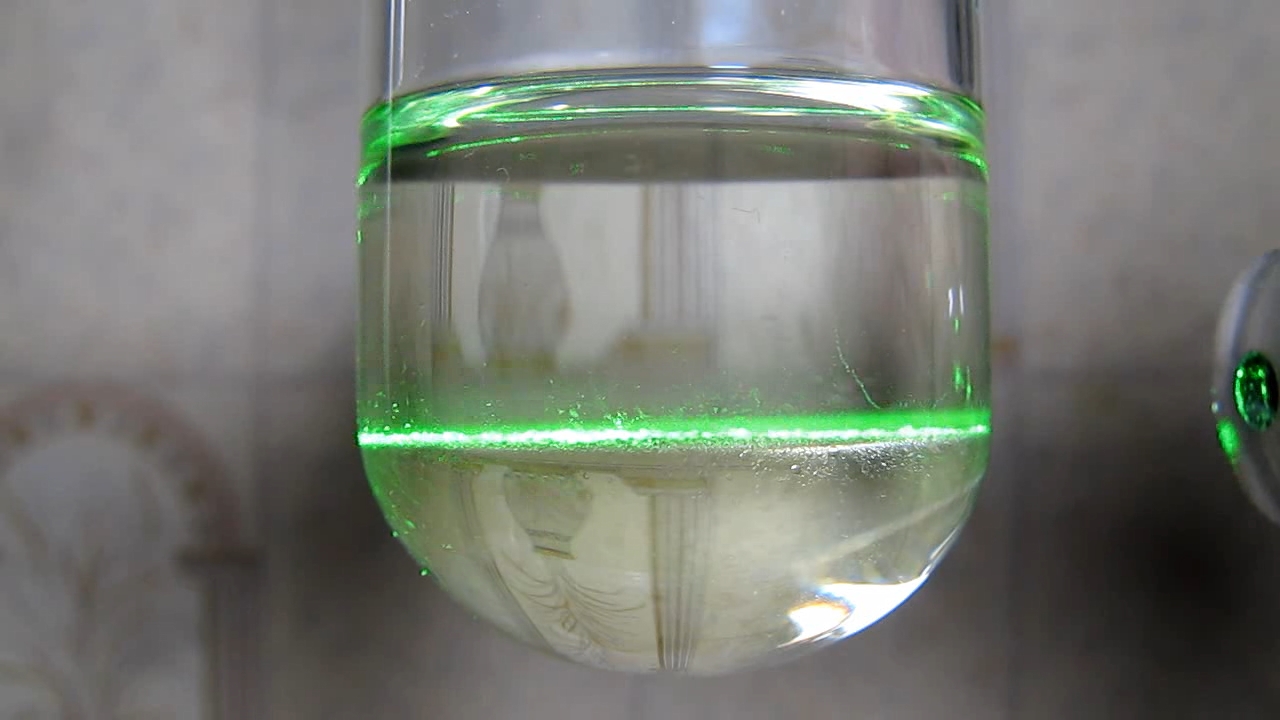
|

|

|
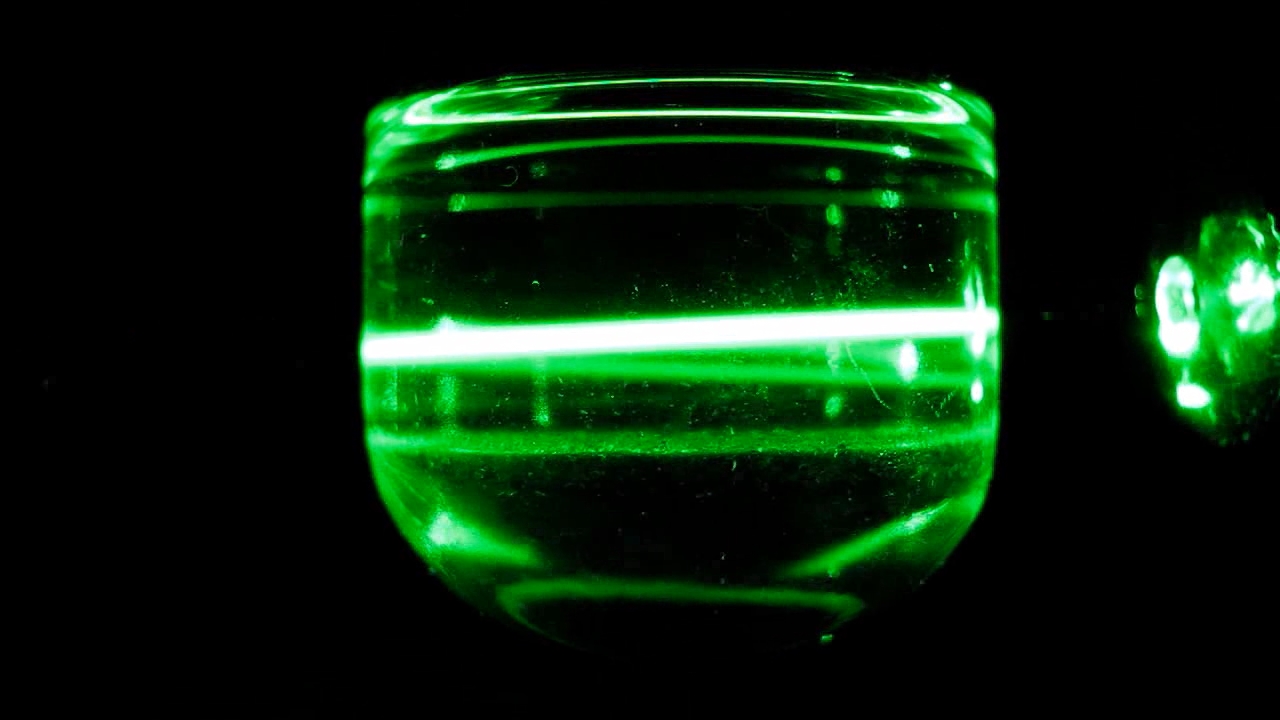
|

|
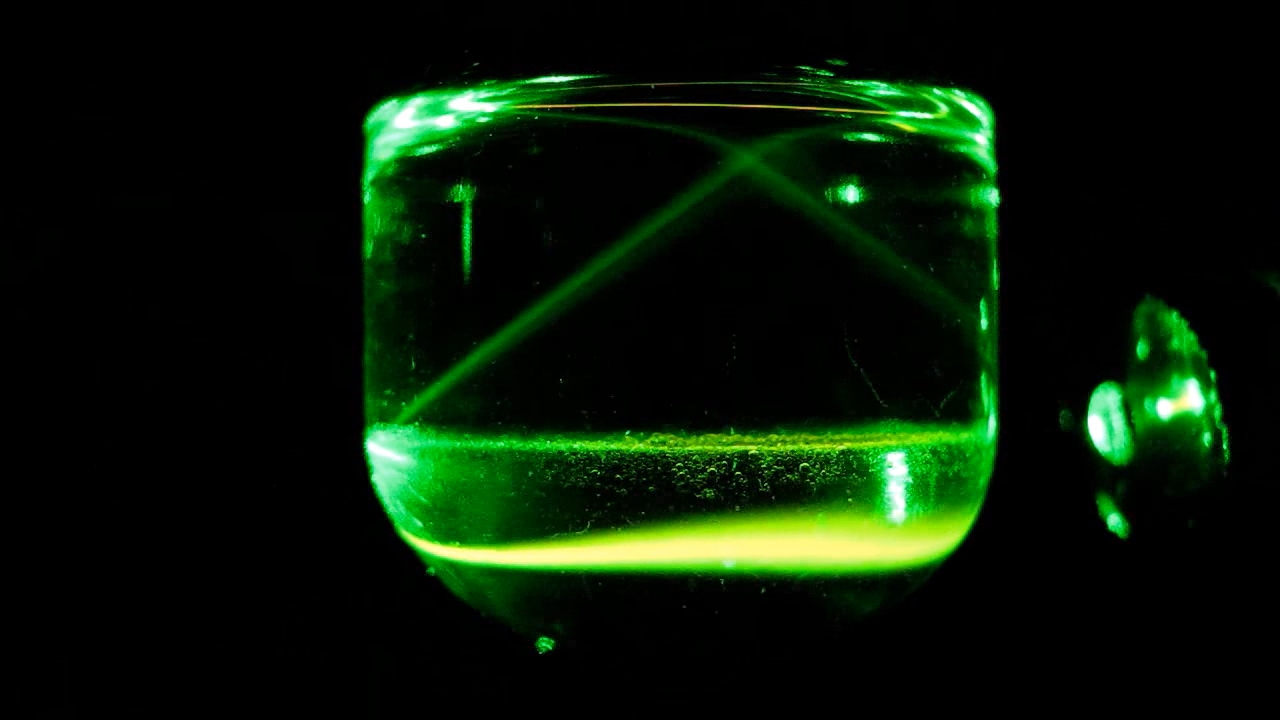
|

|
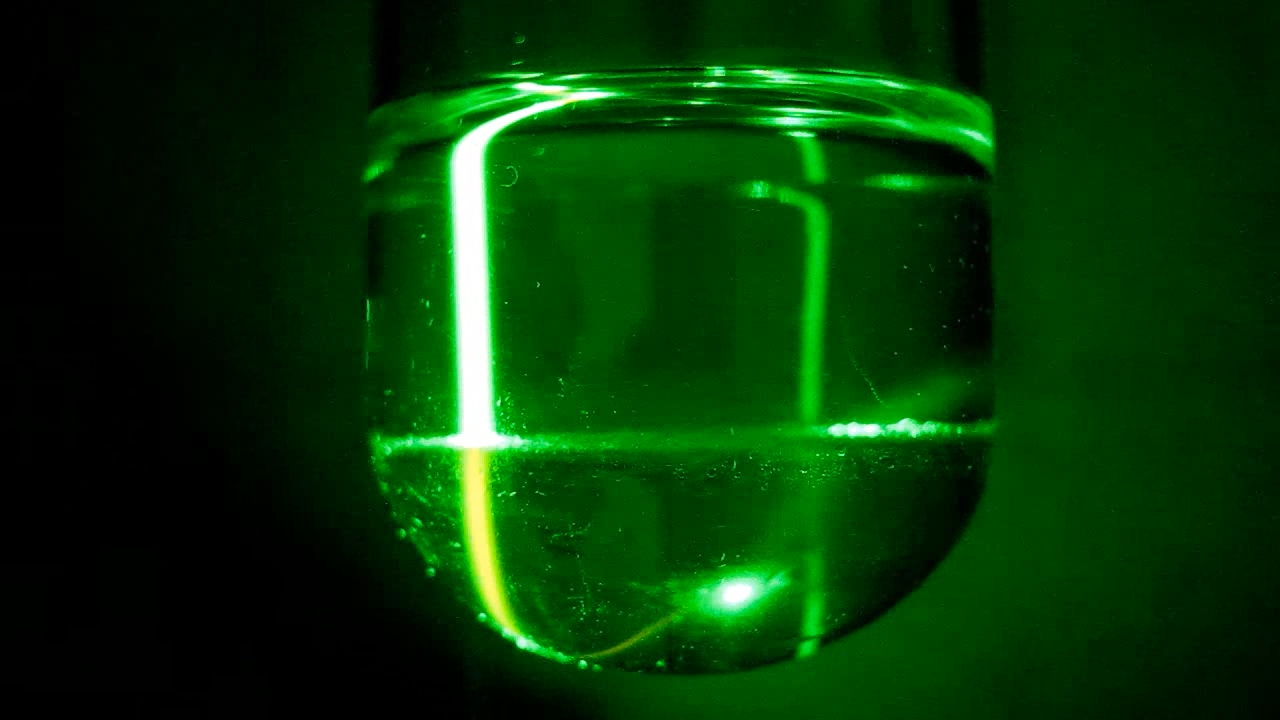
|
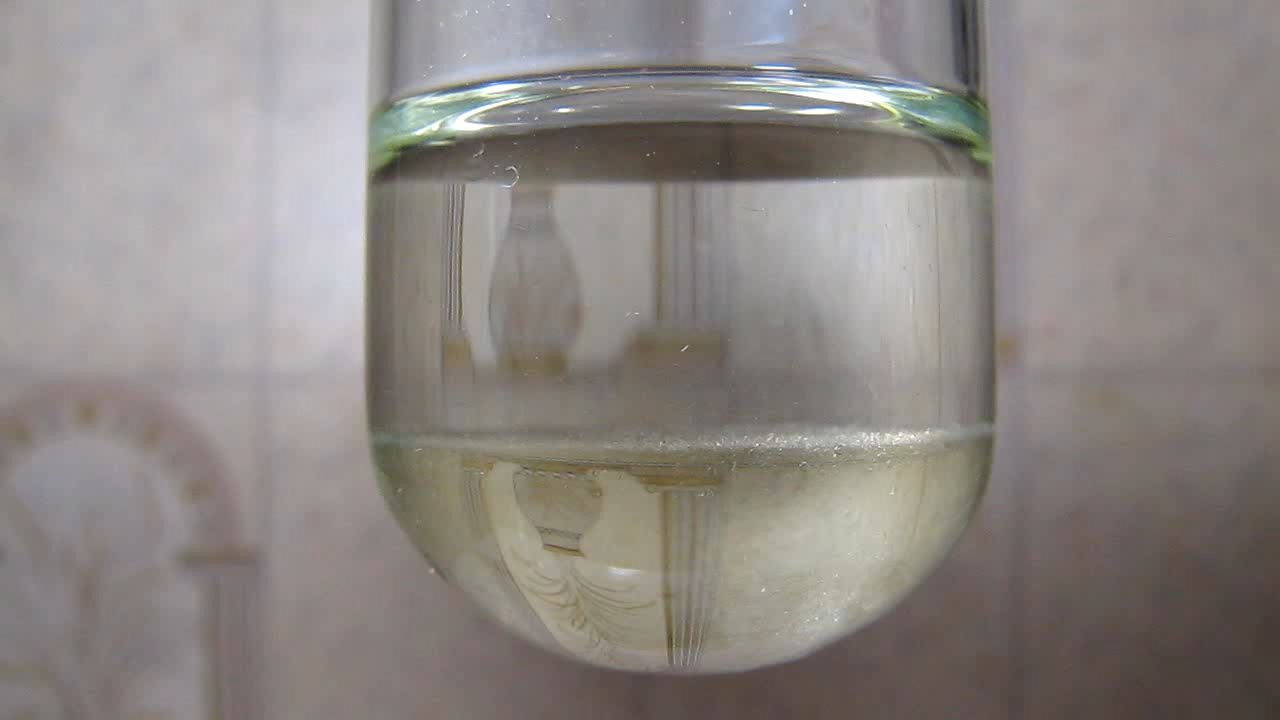
|
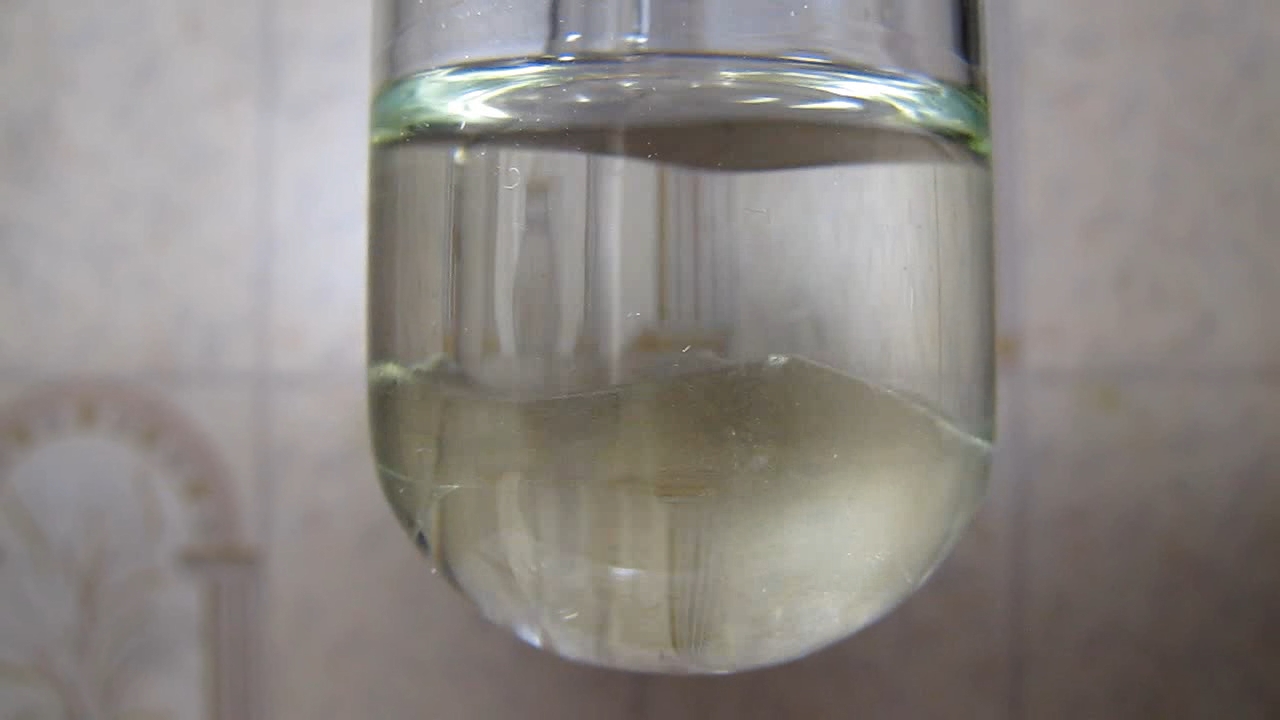
|
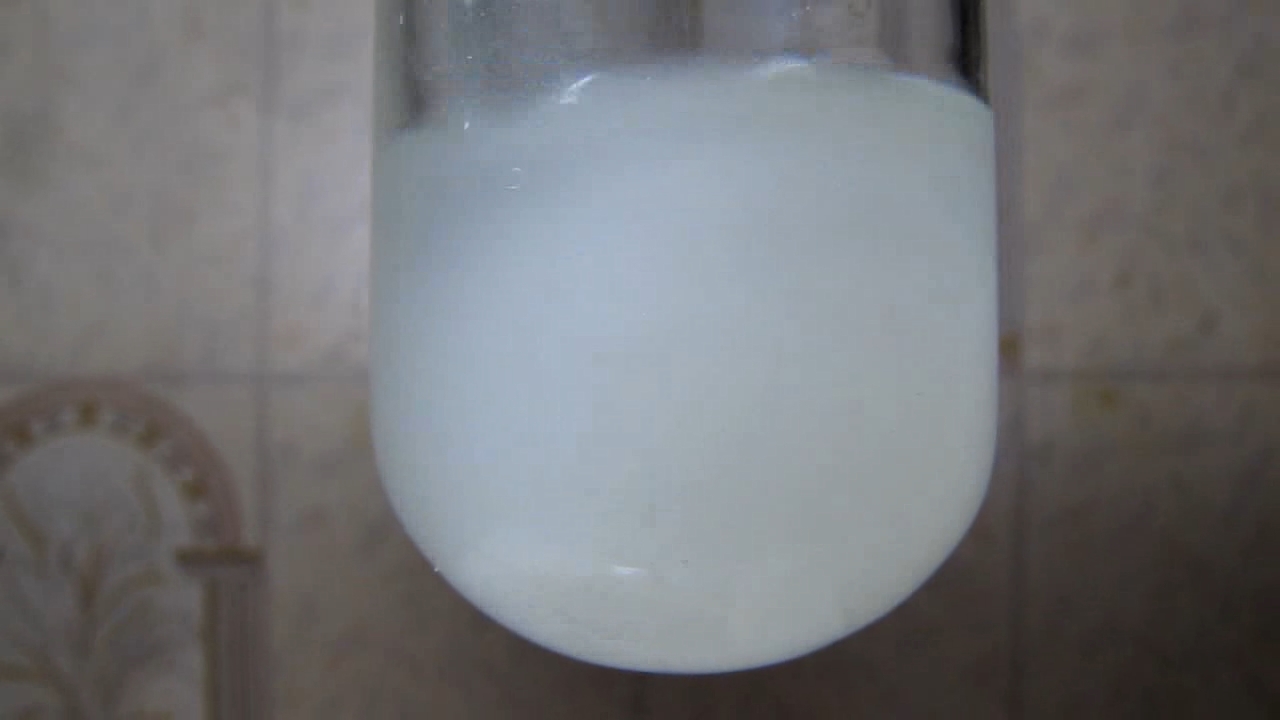
|
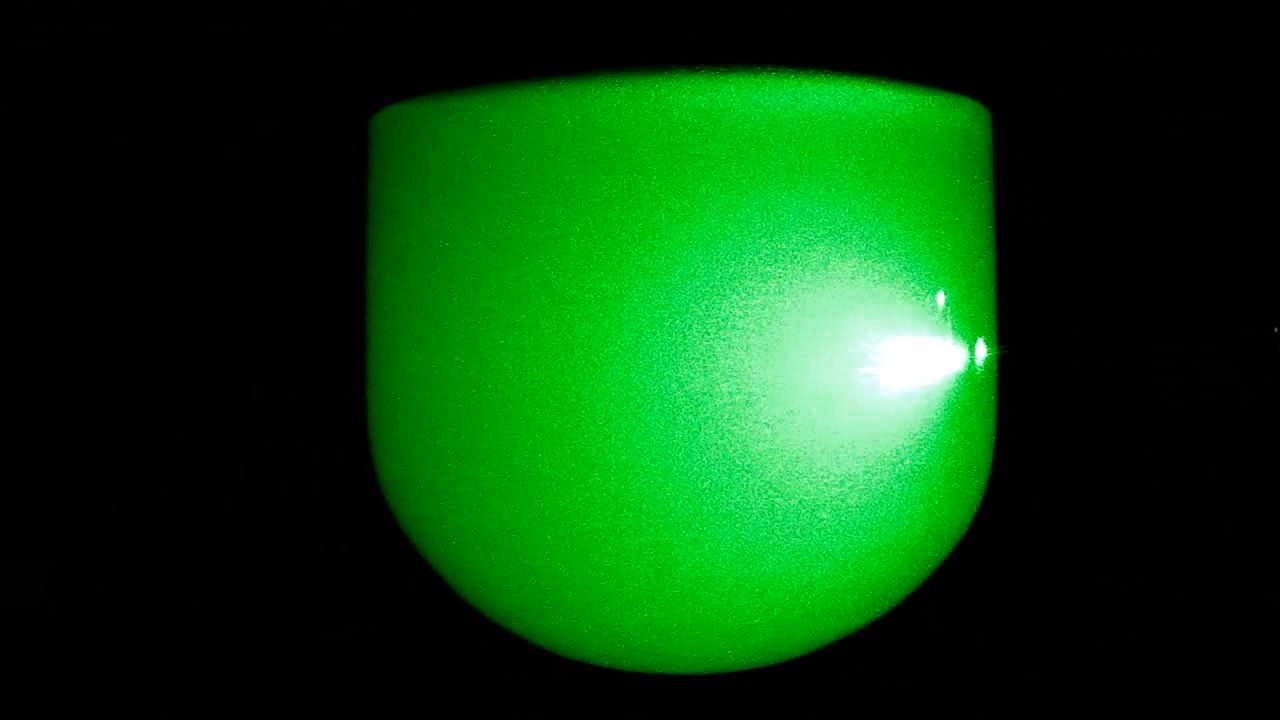
|
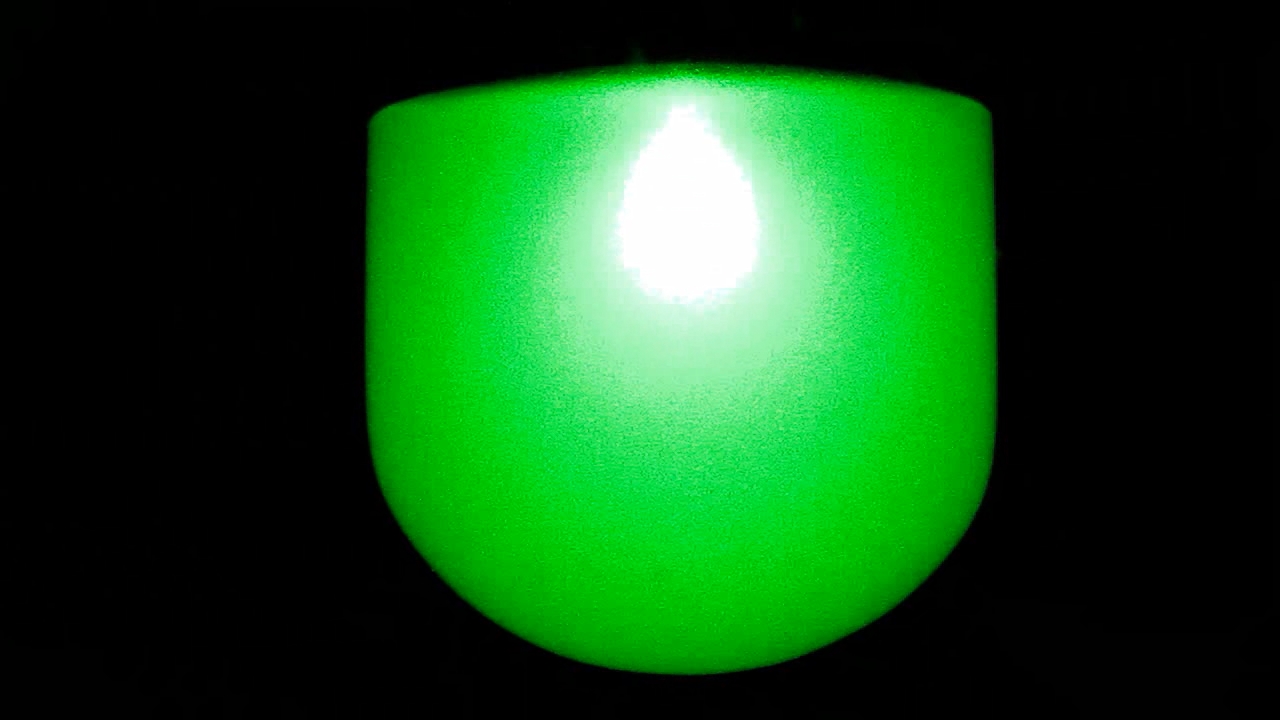
|